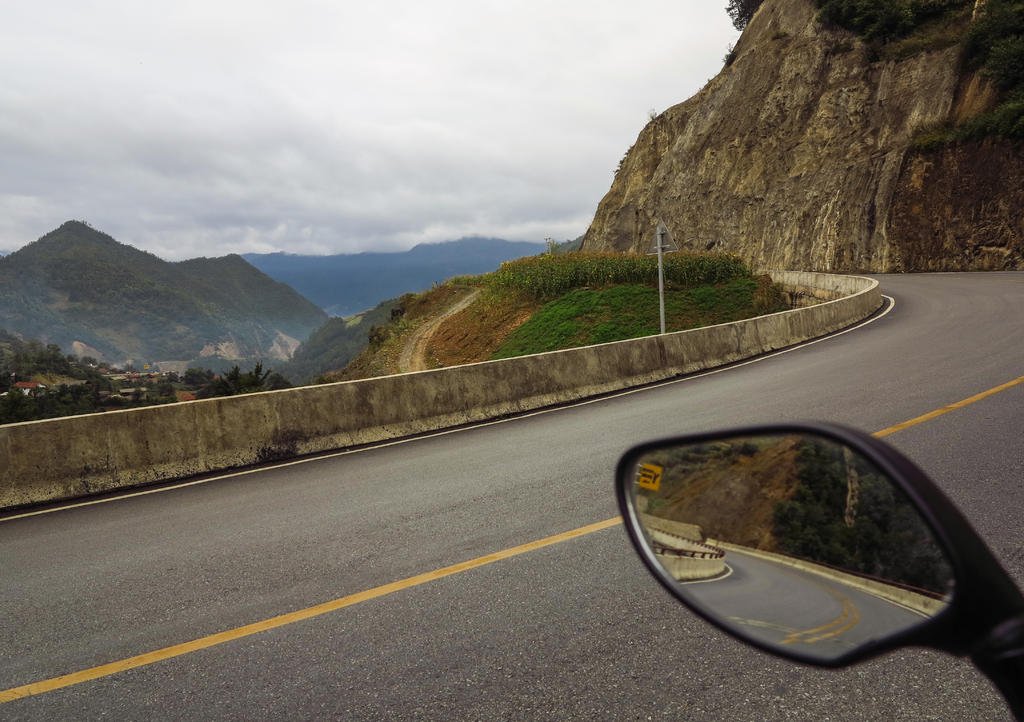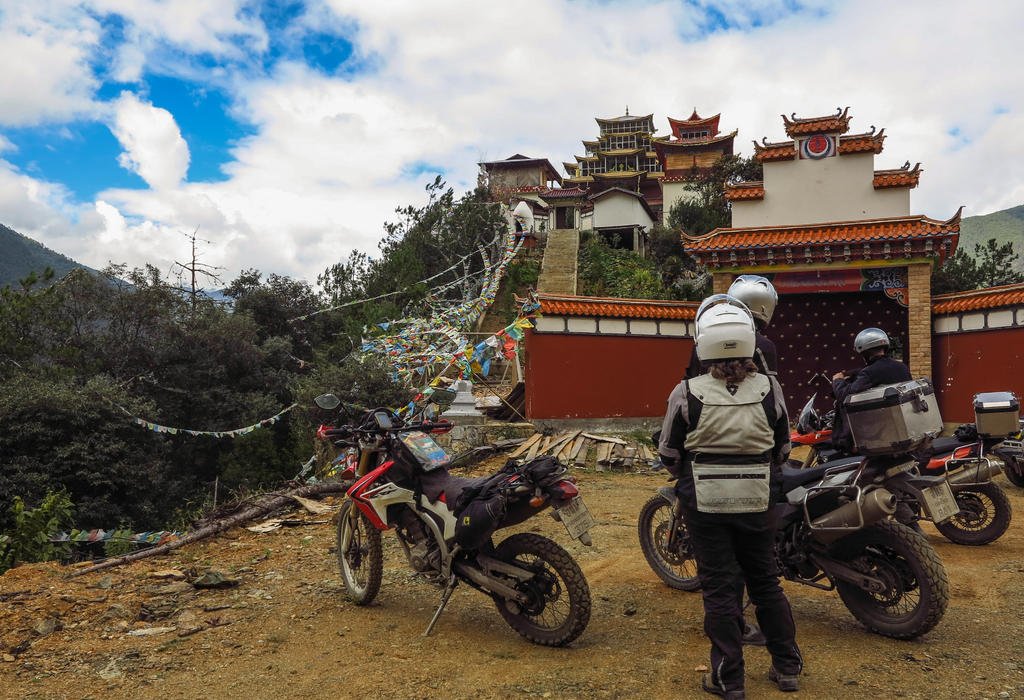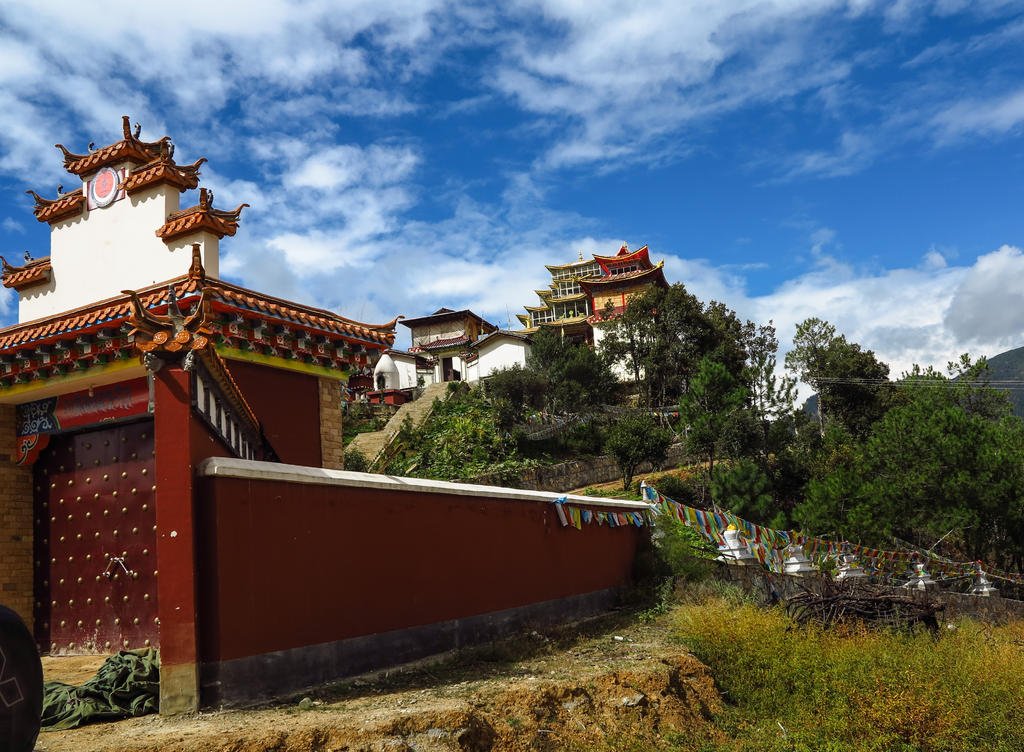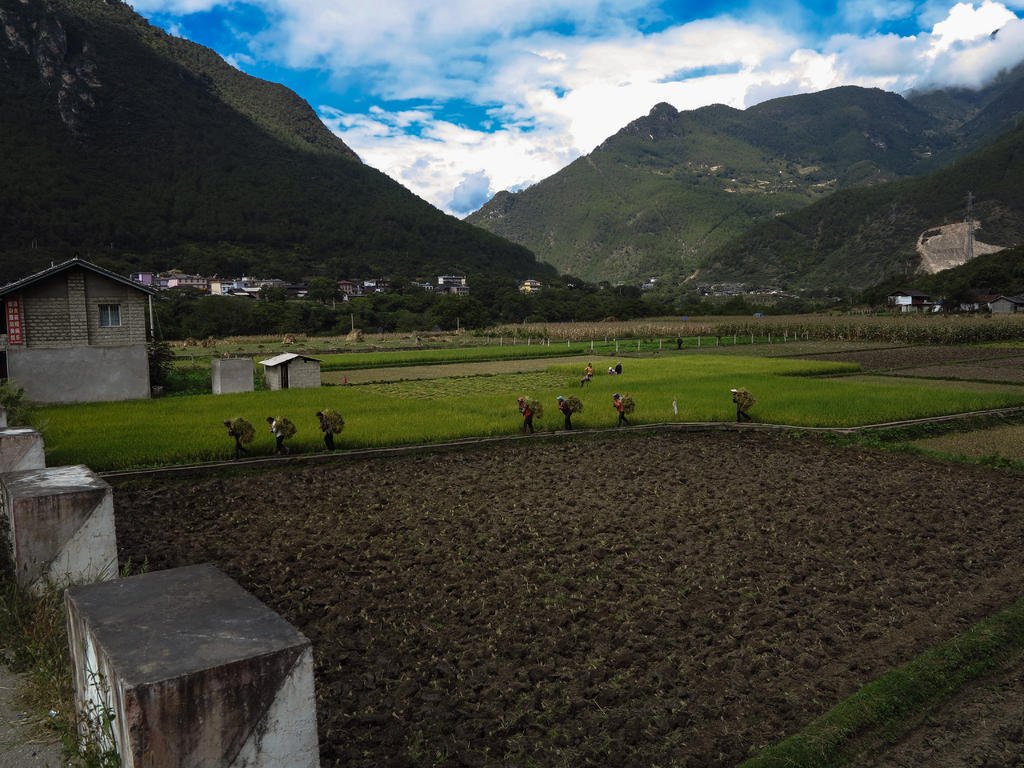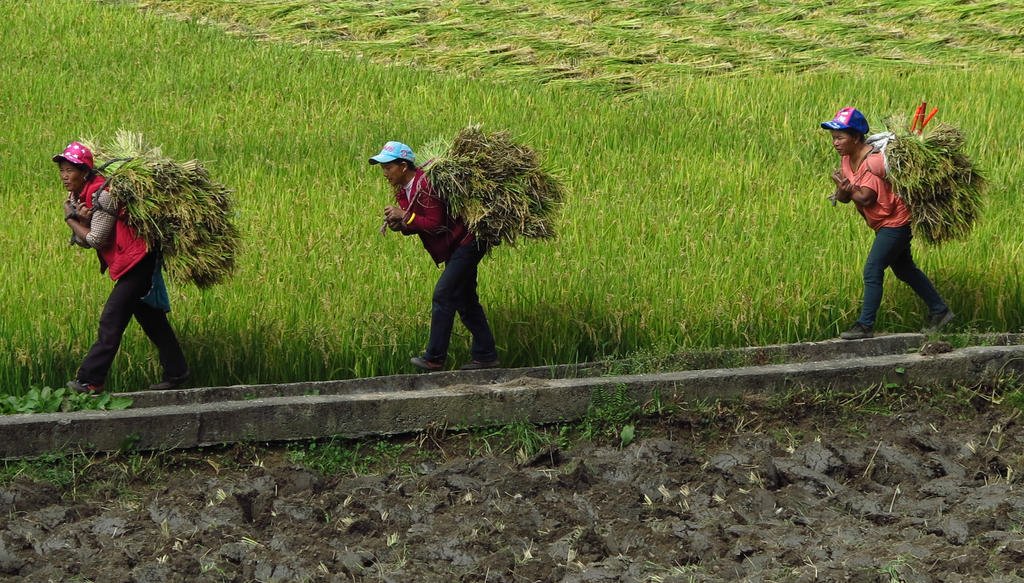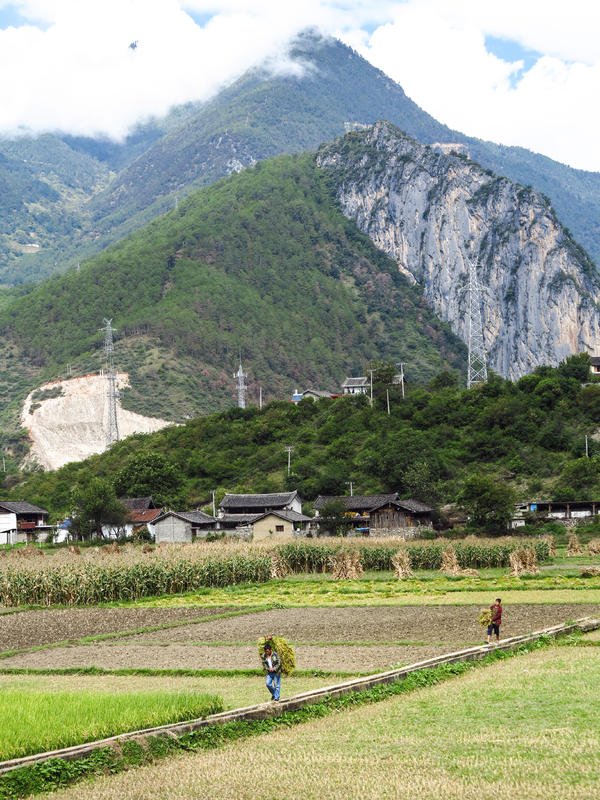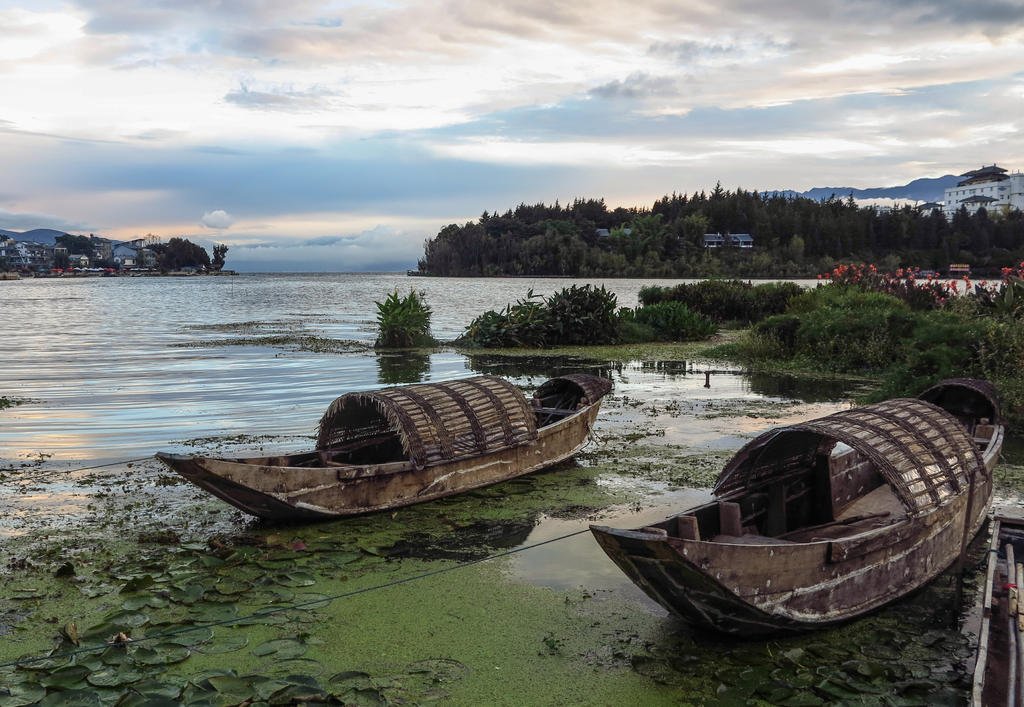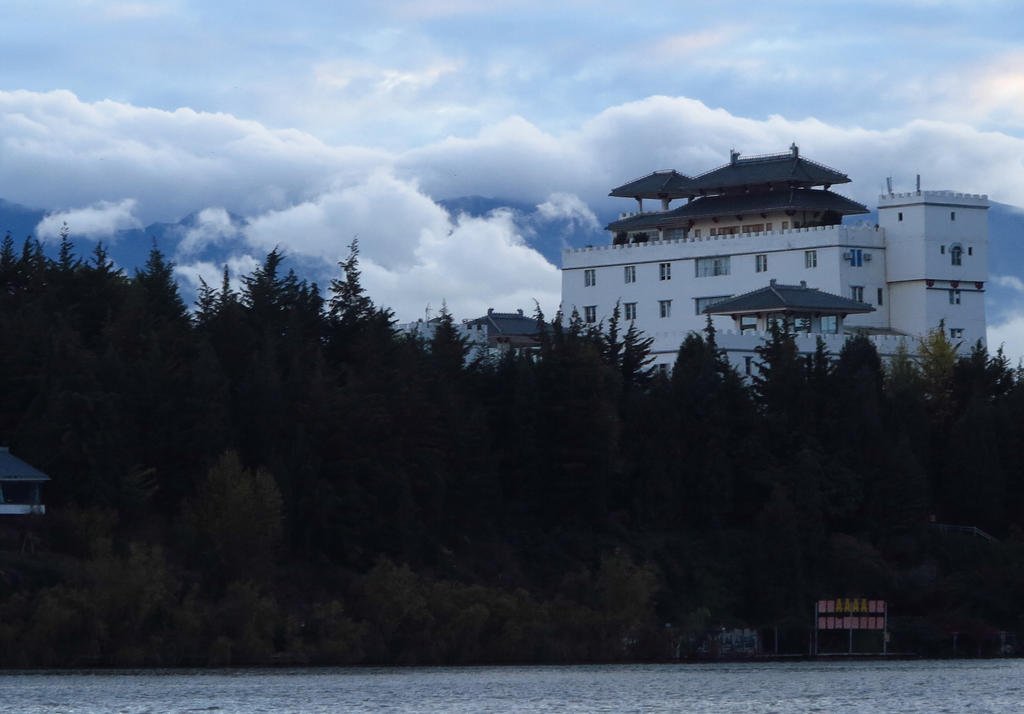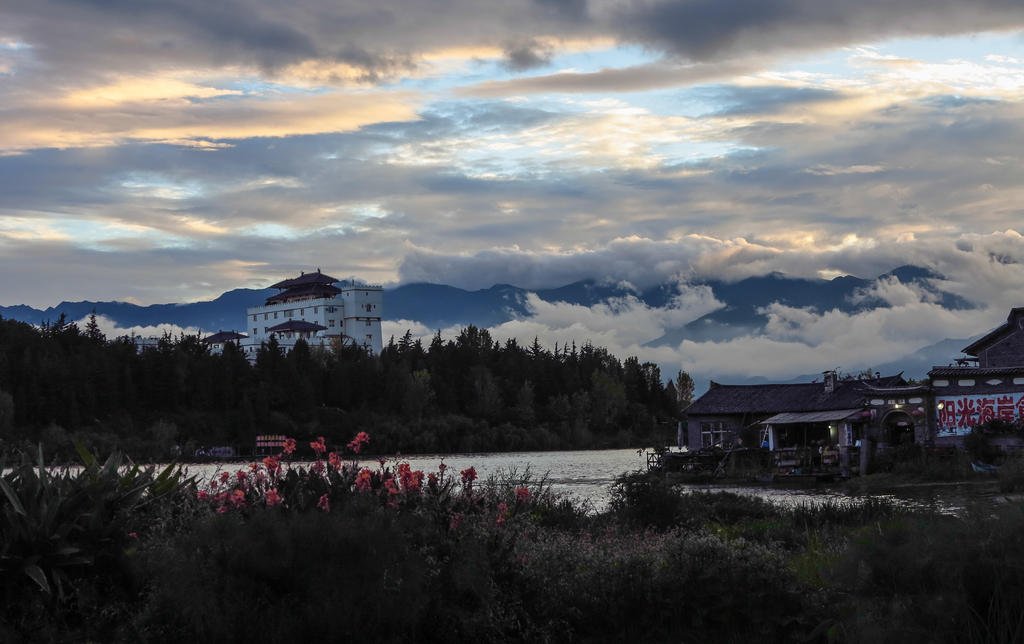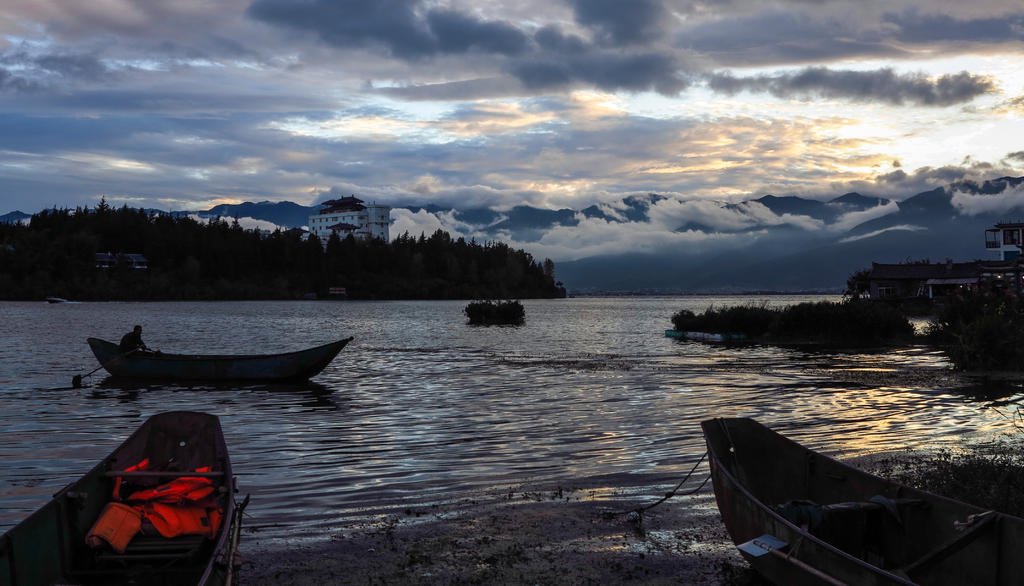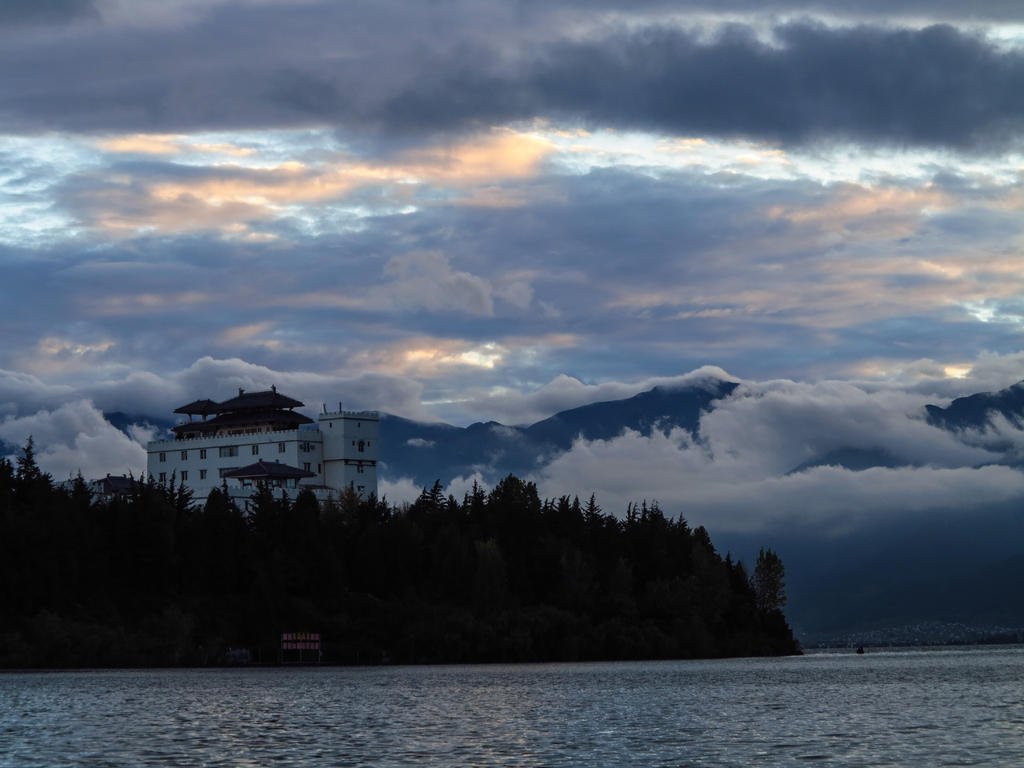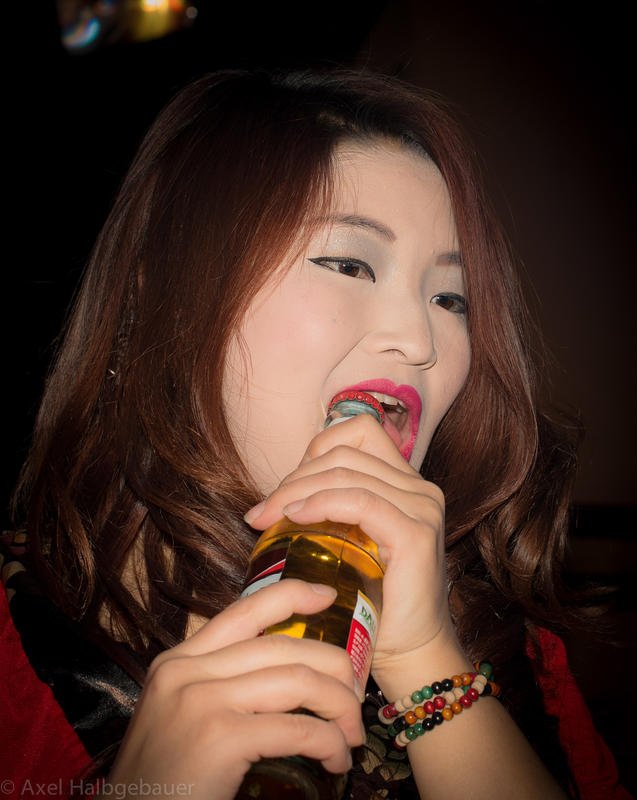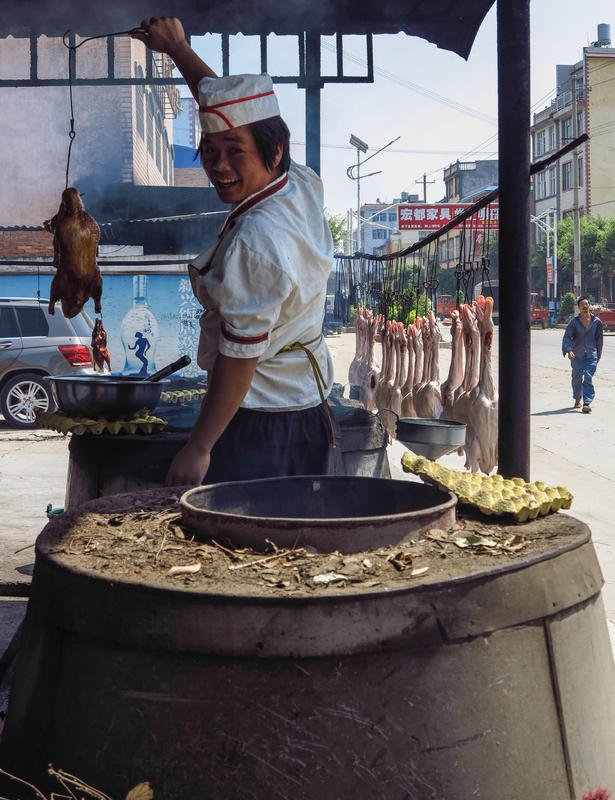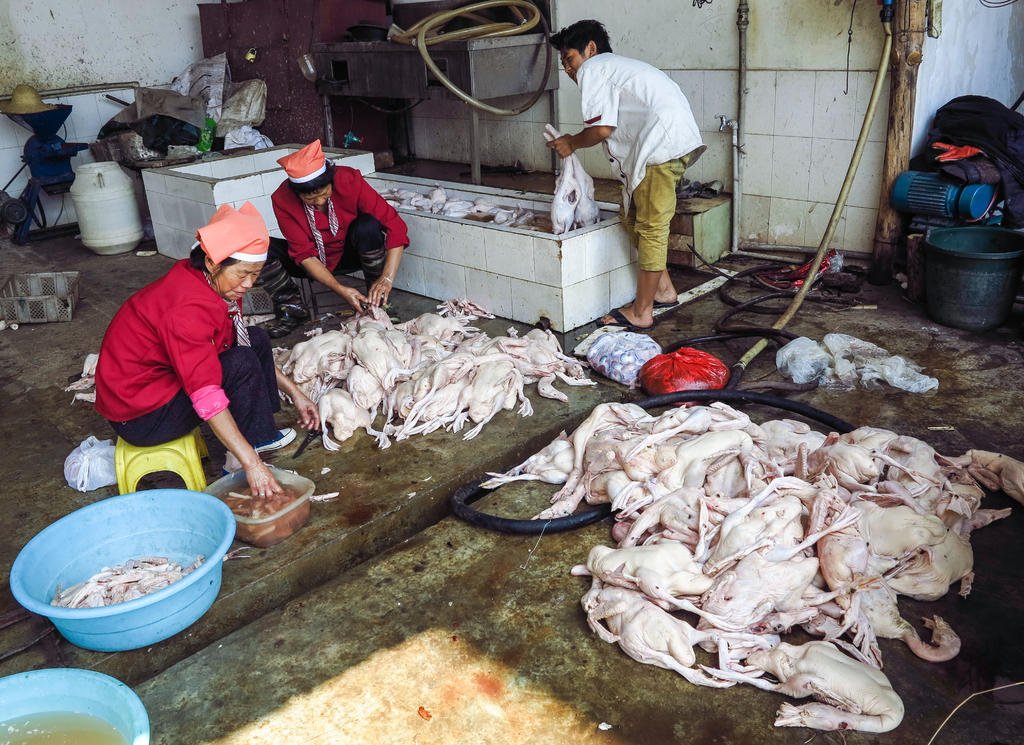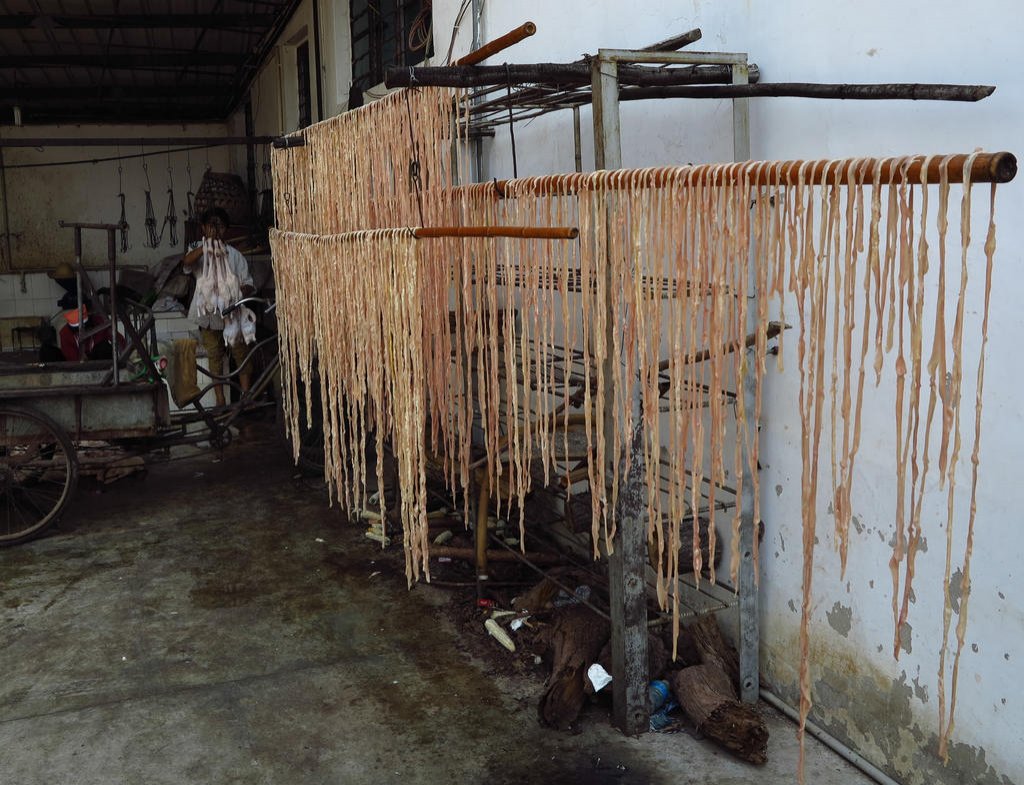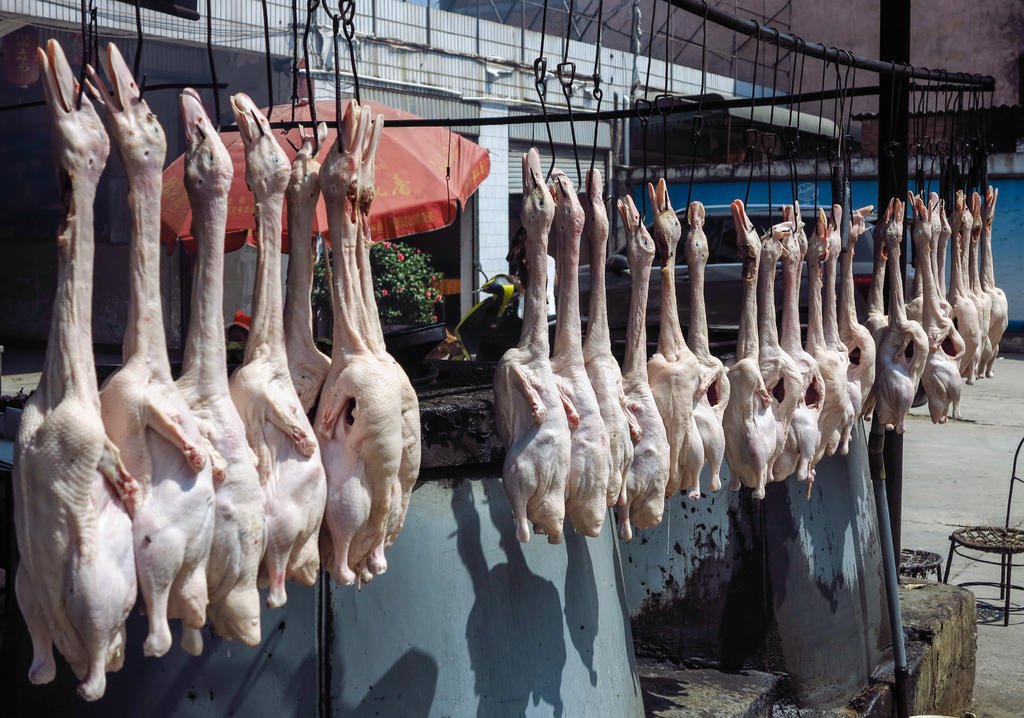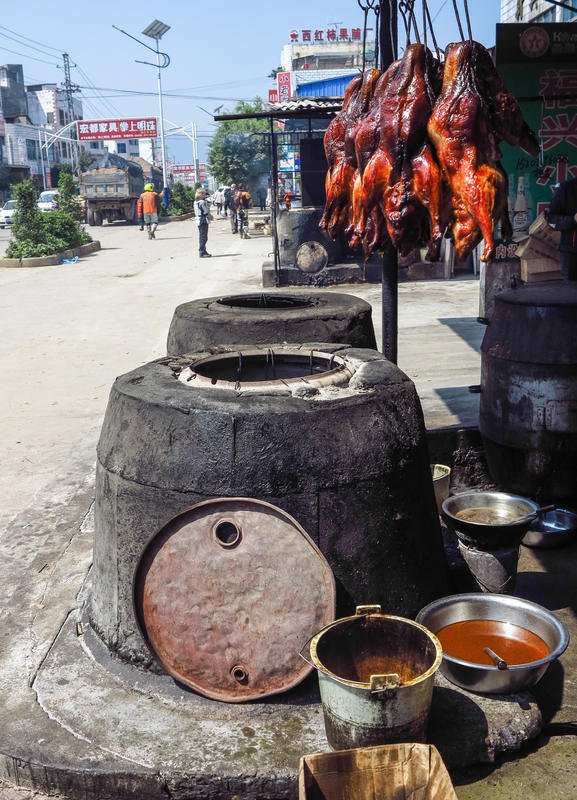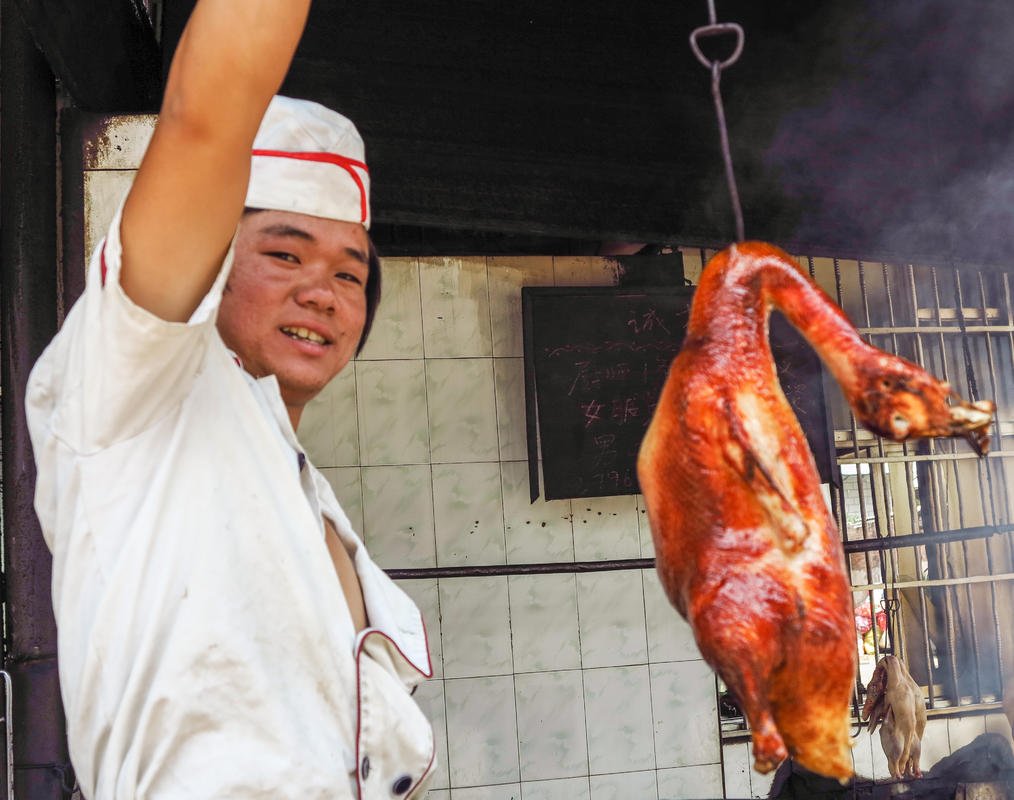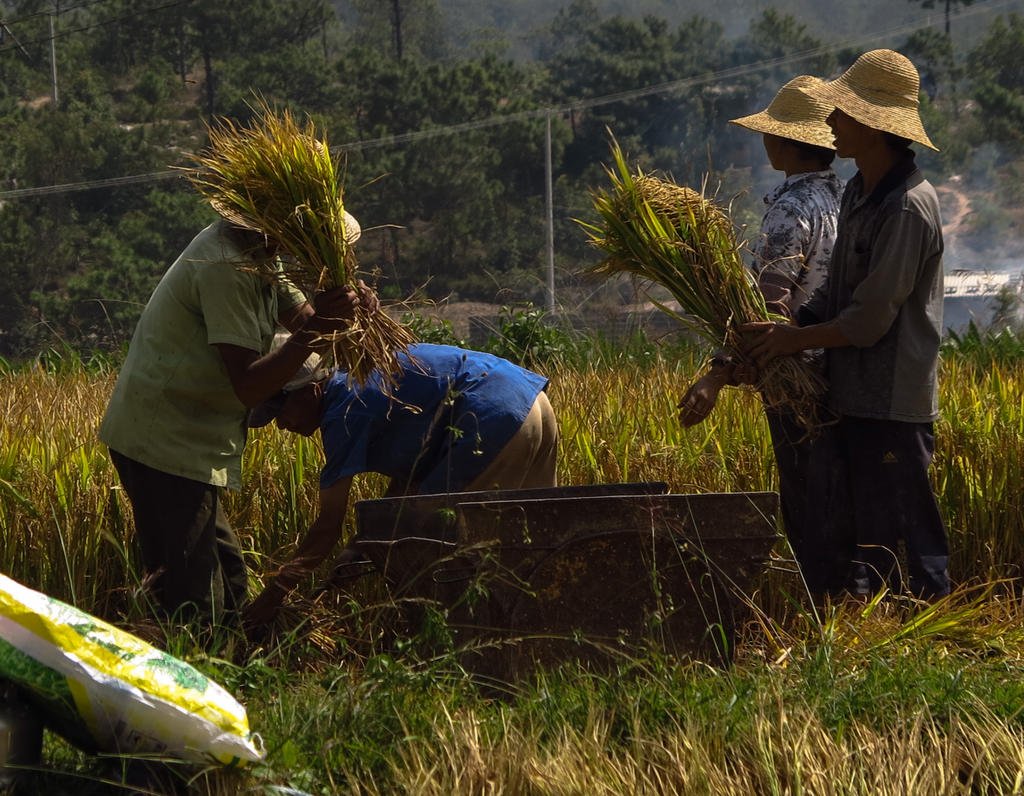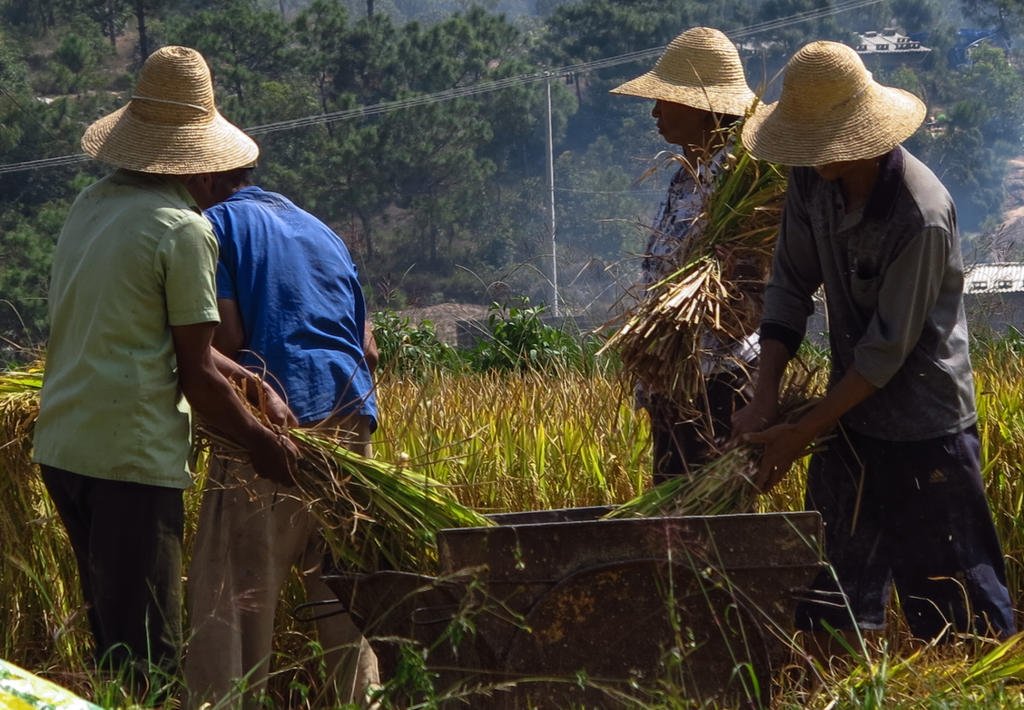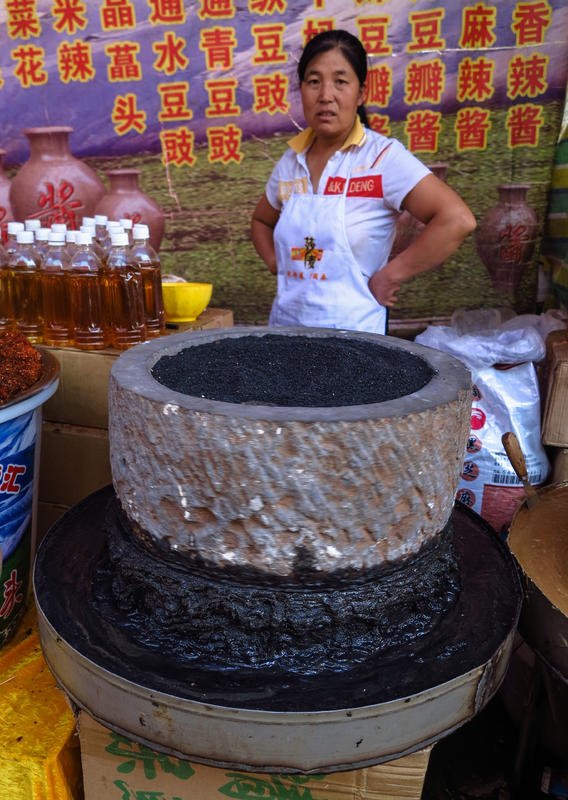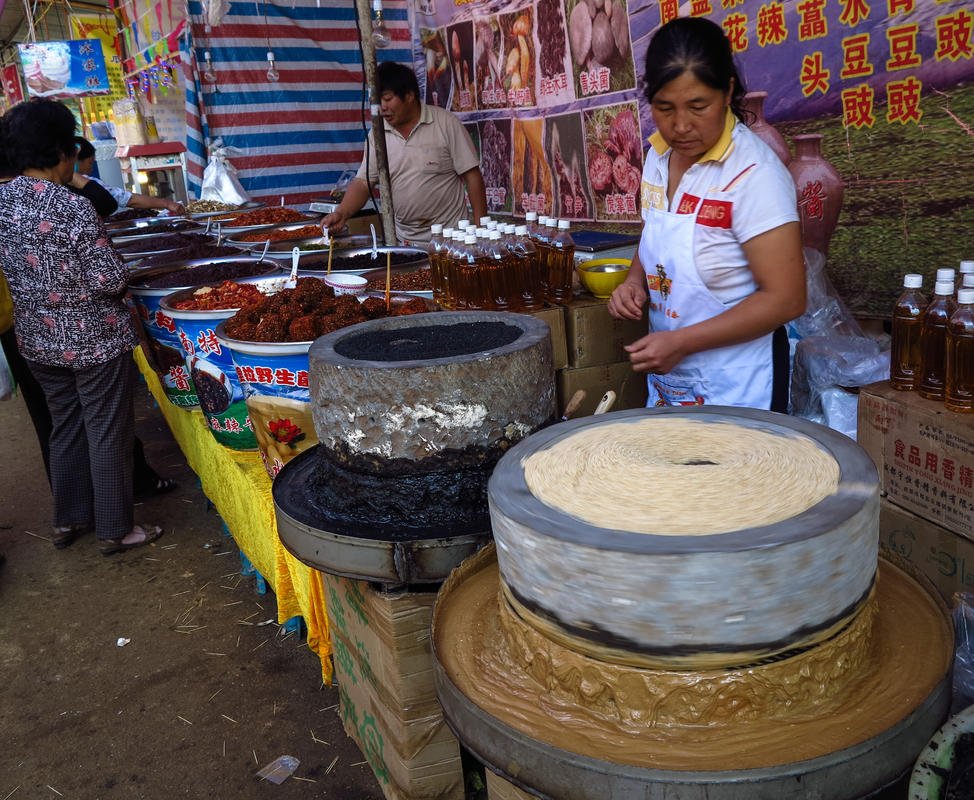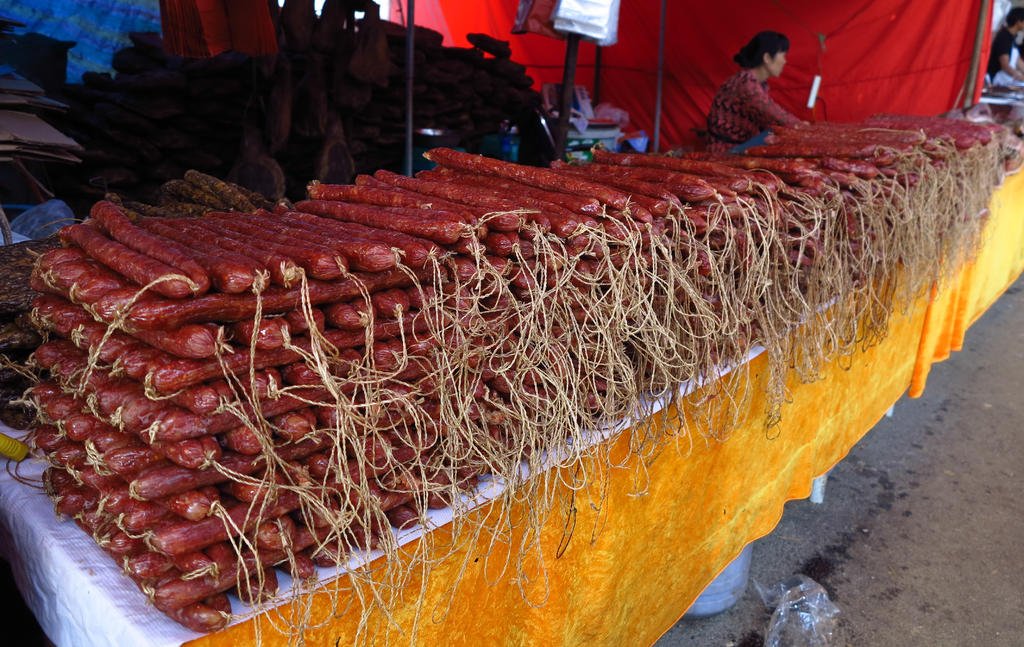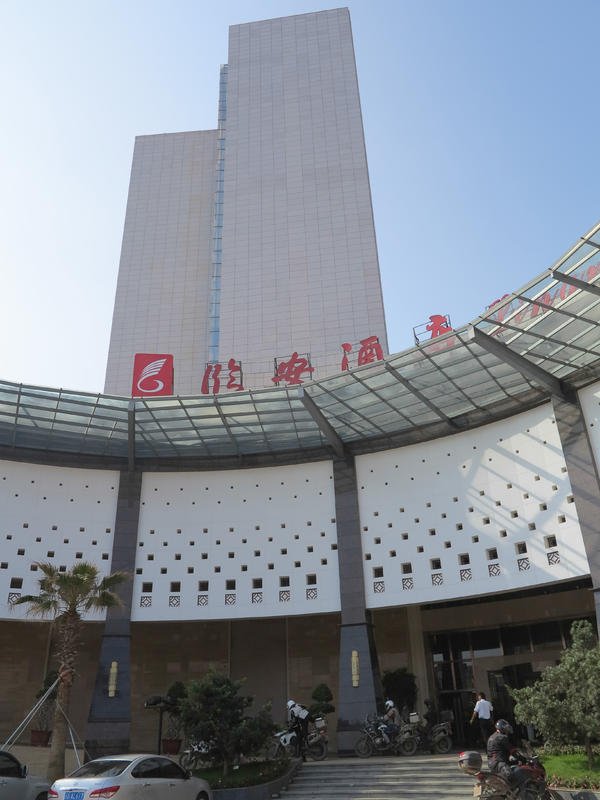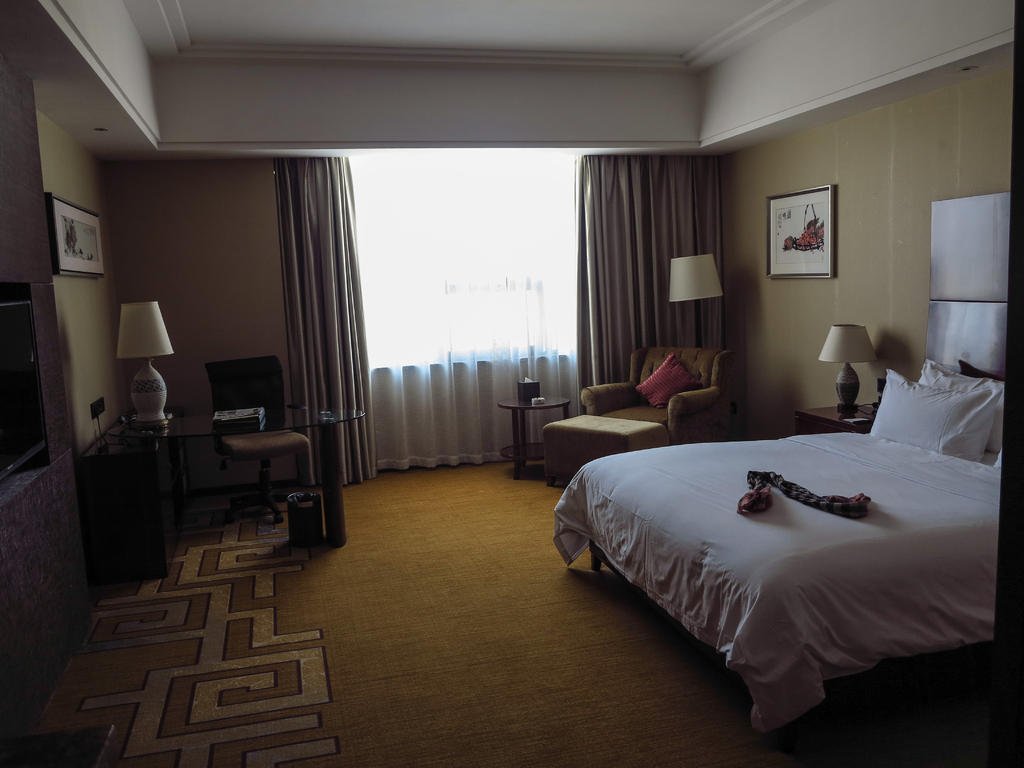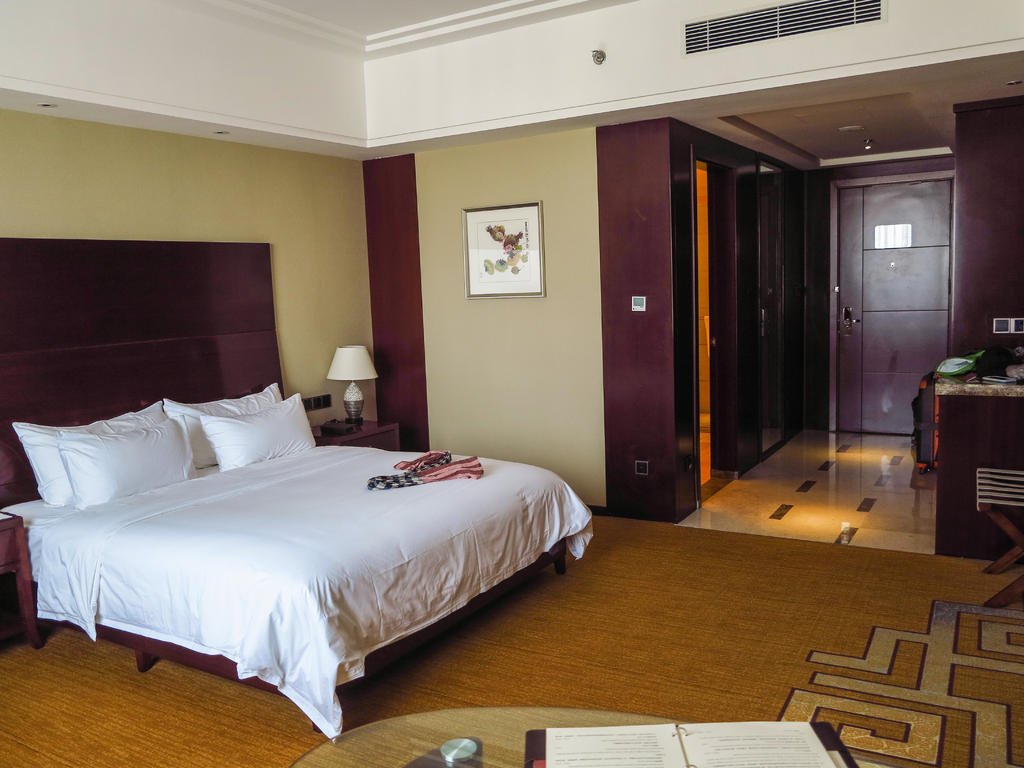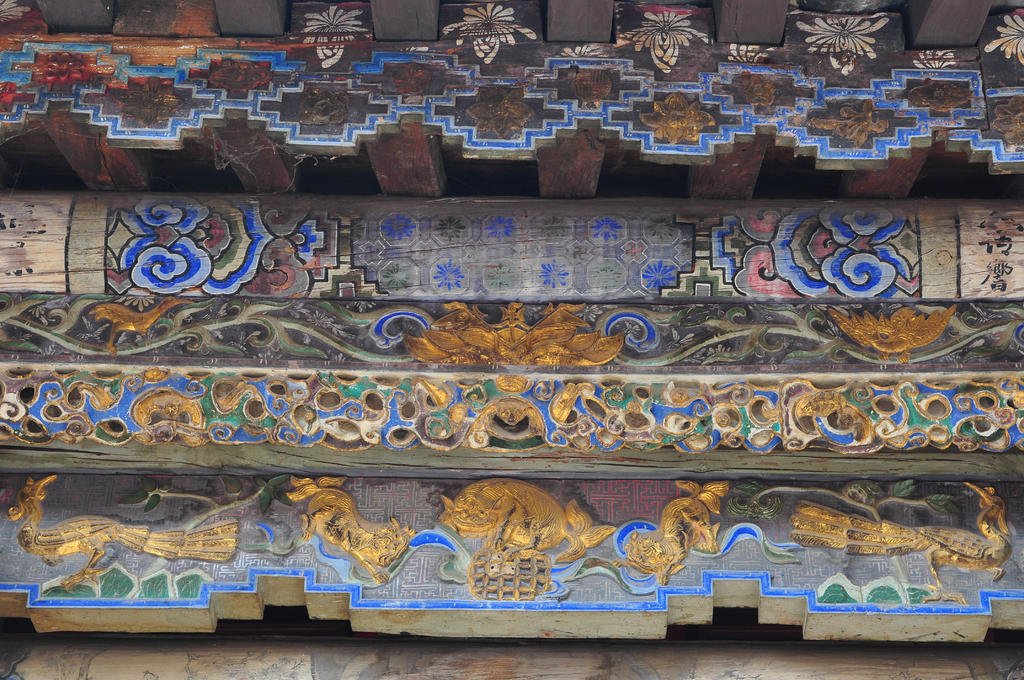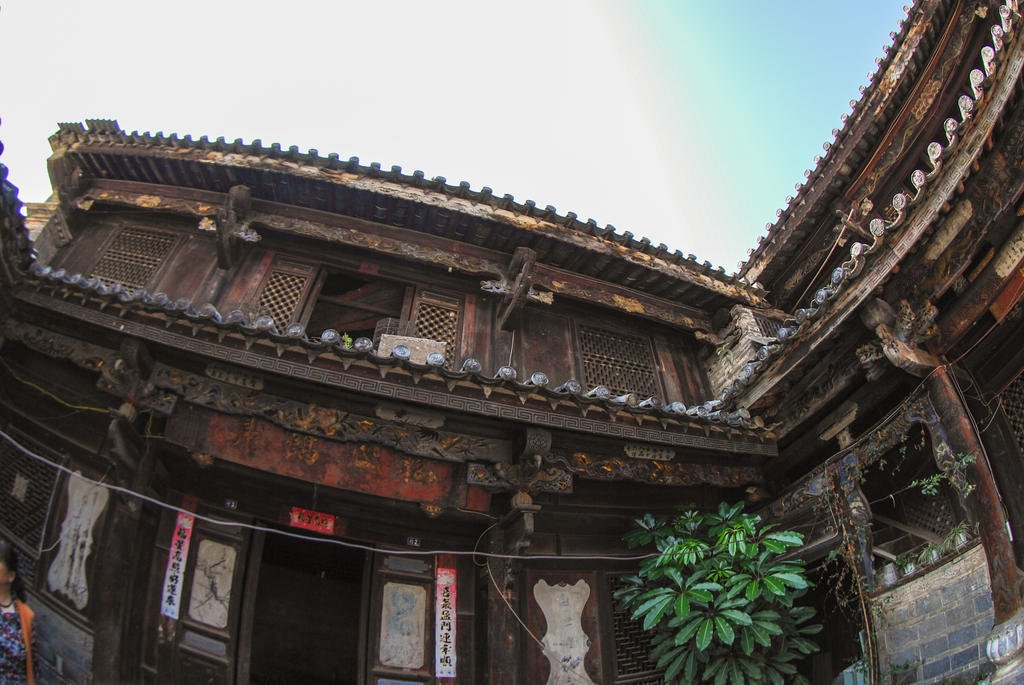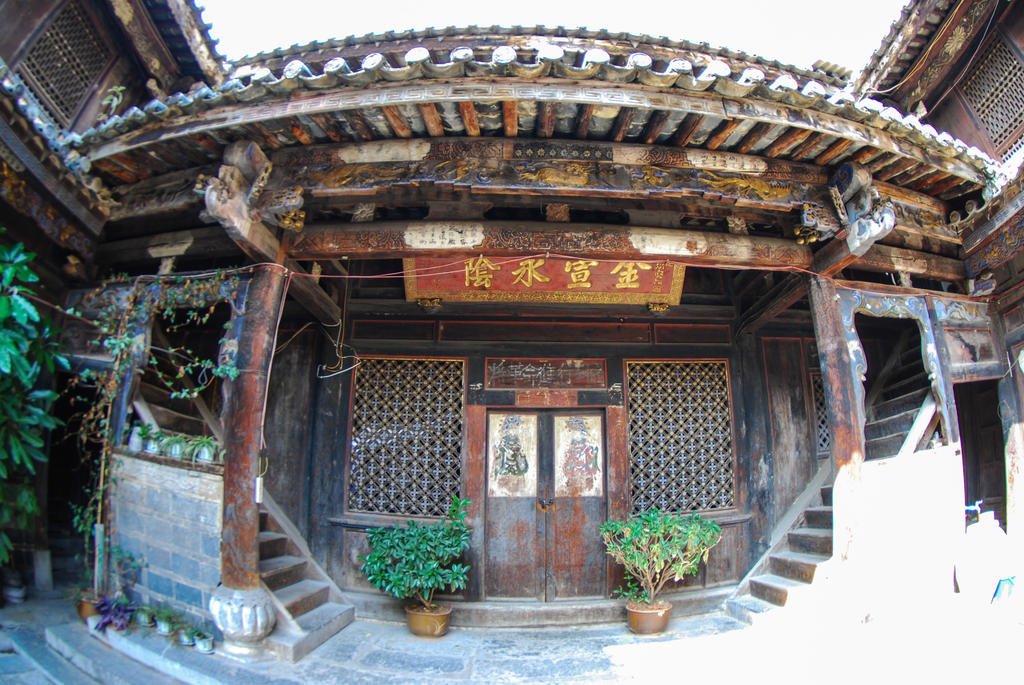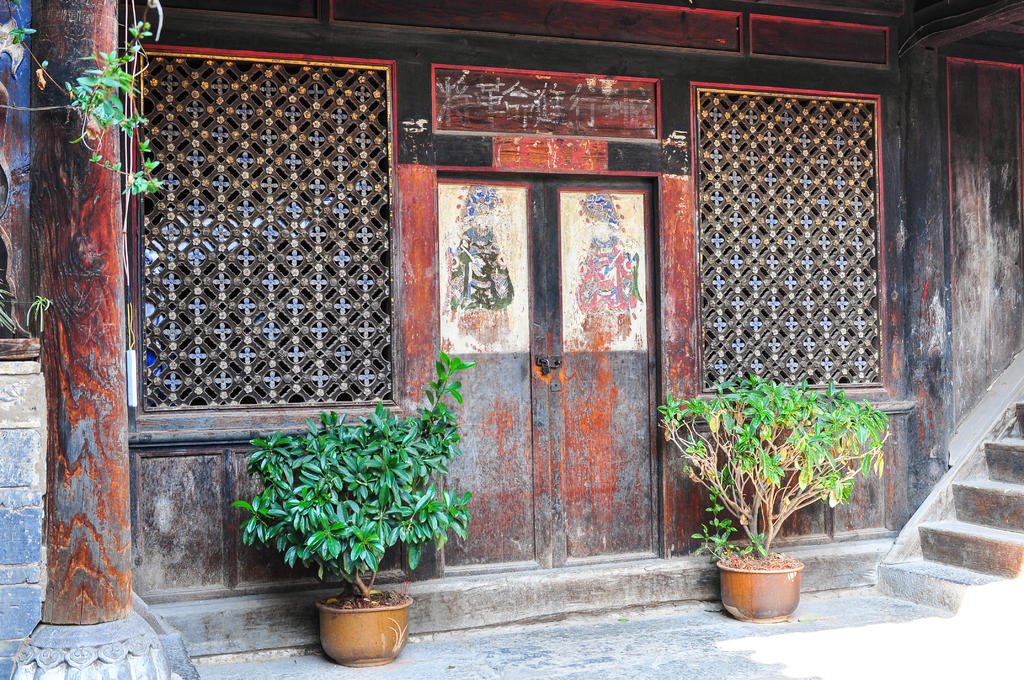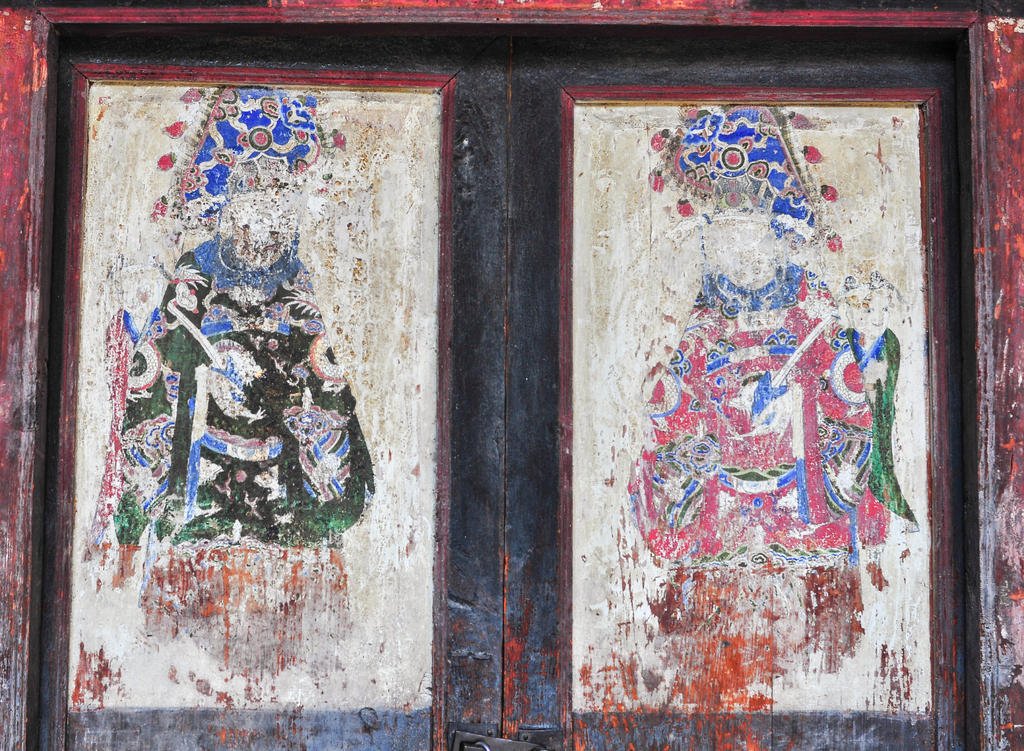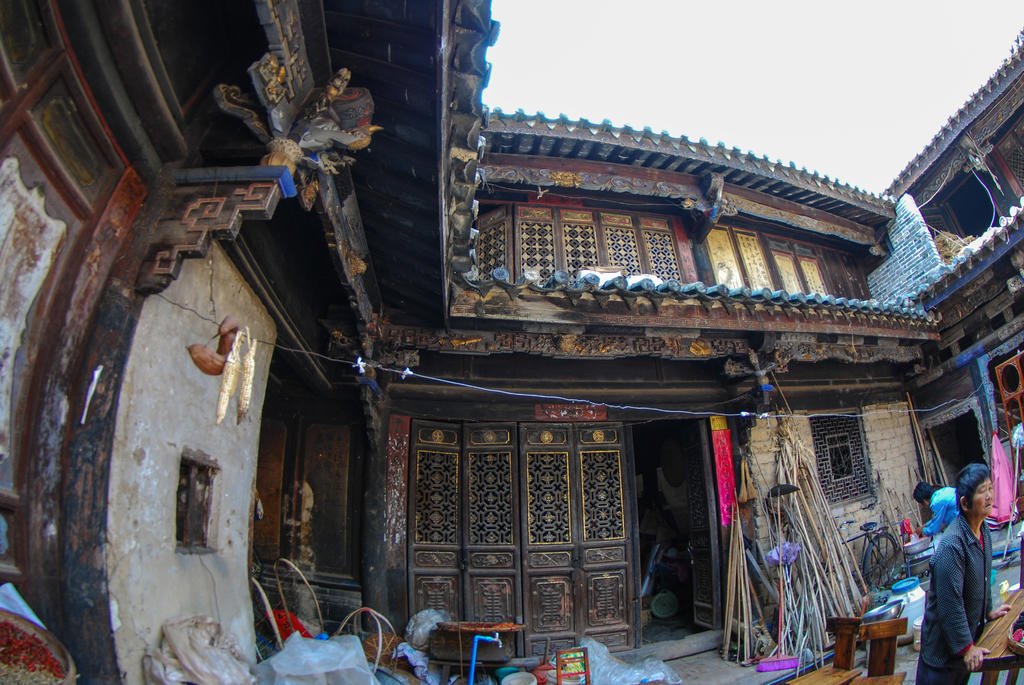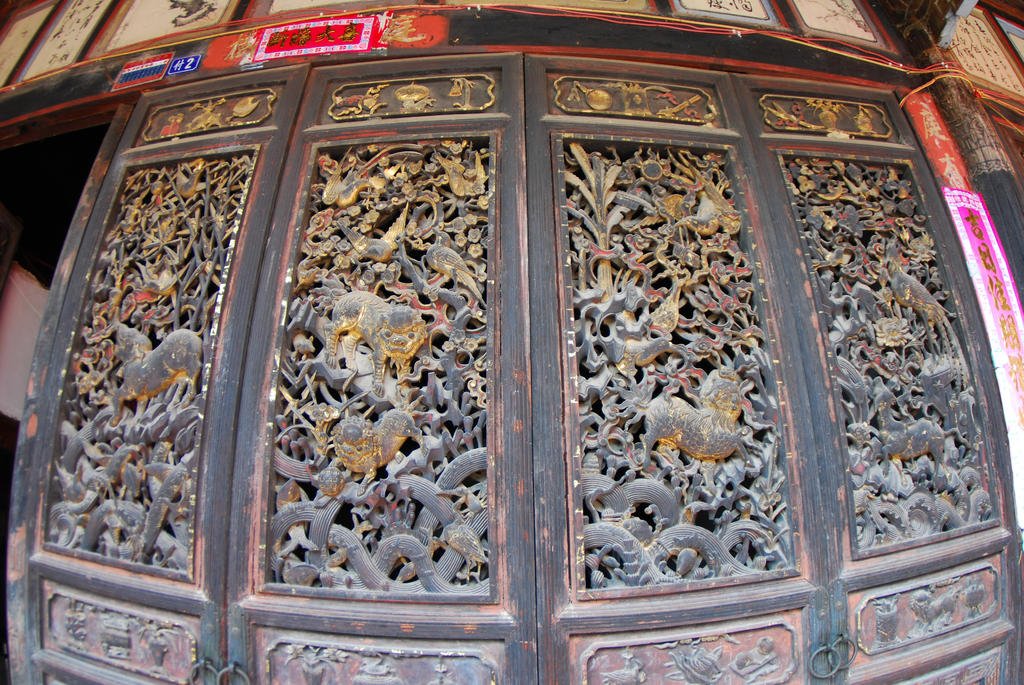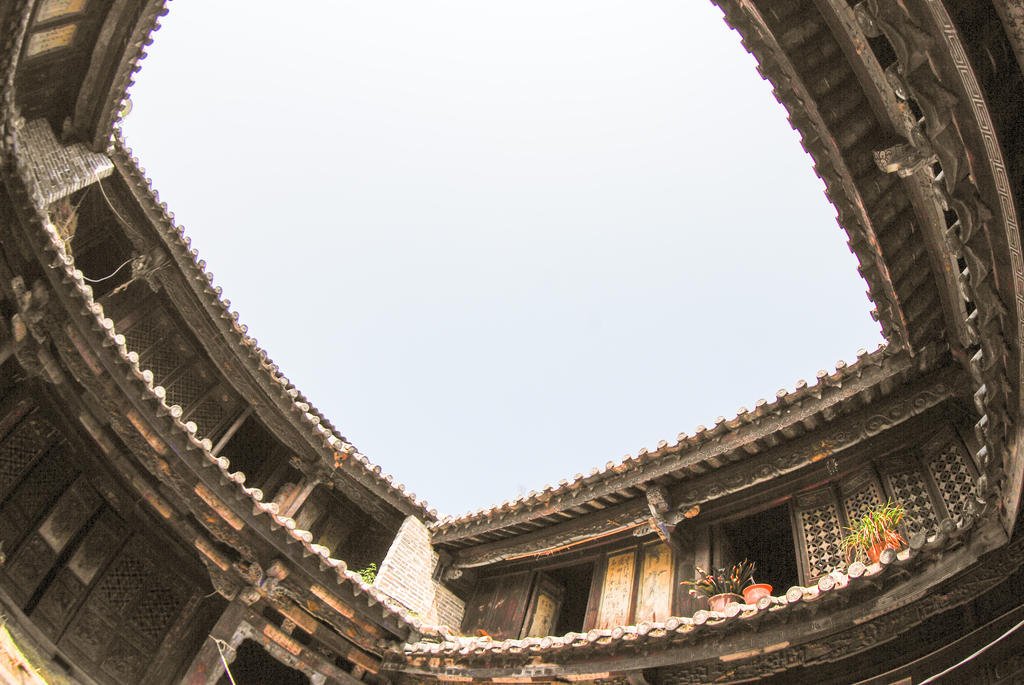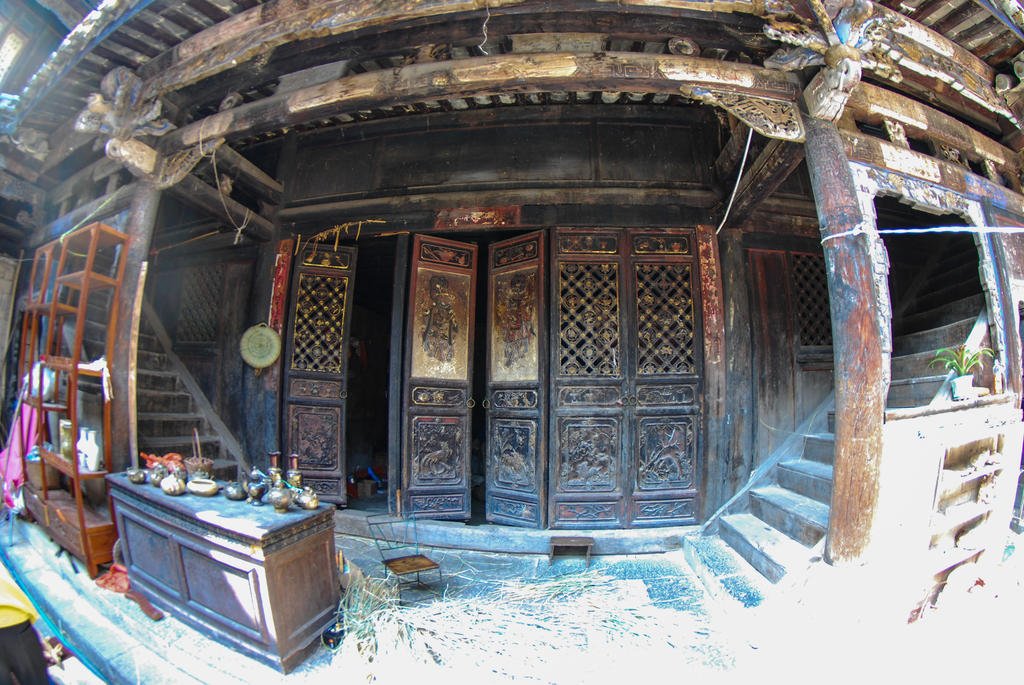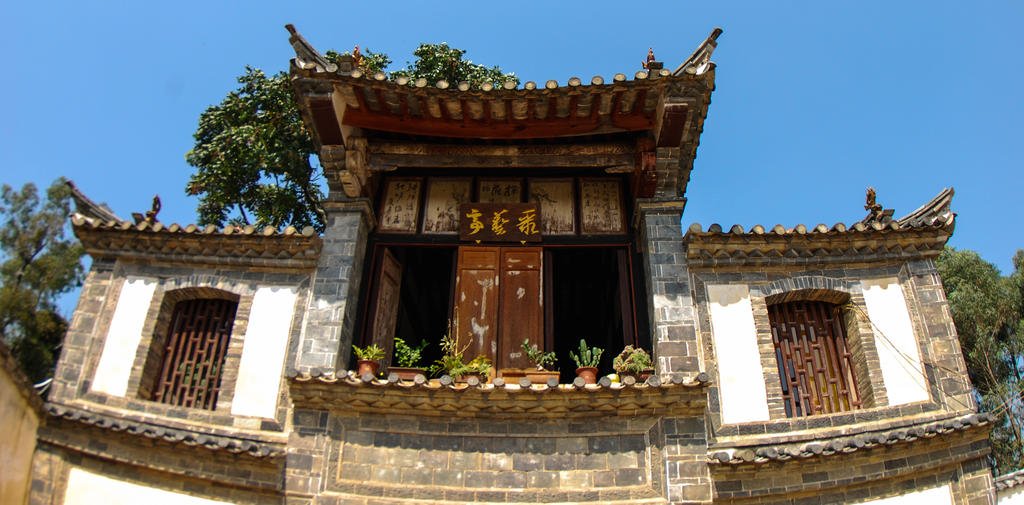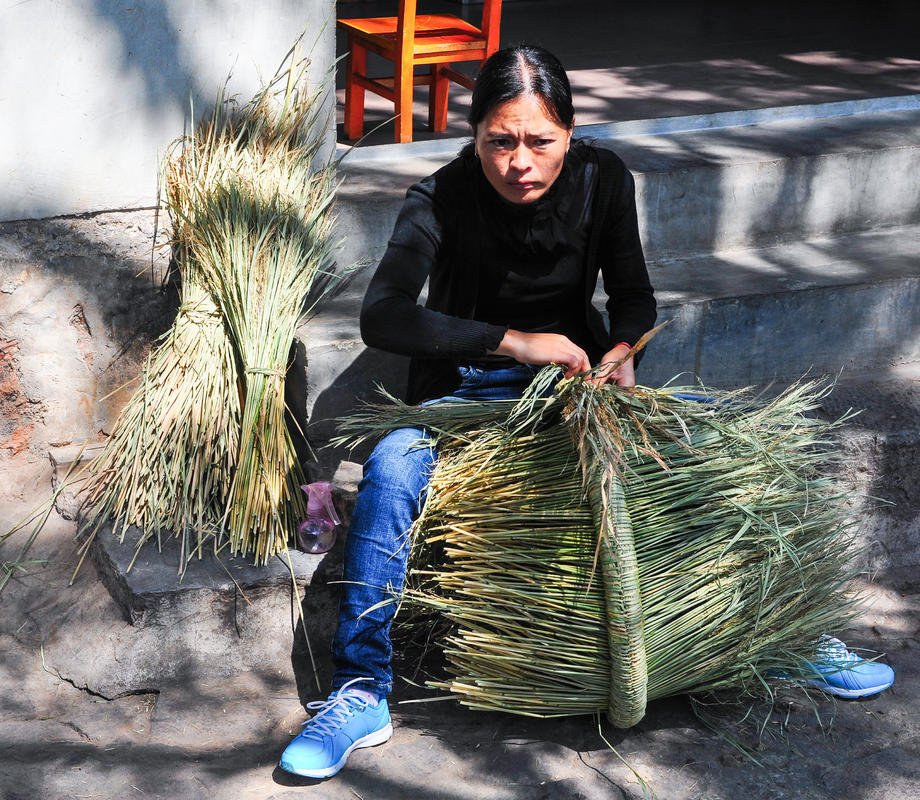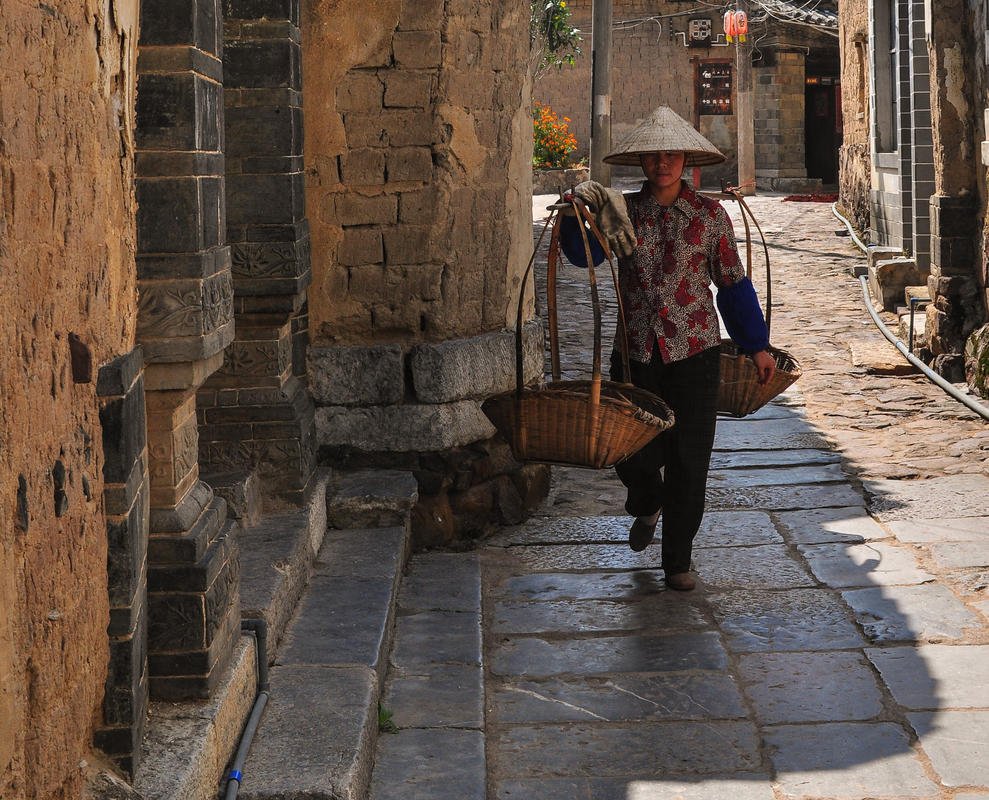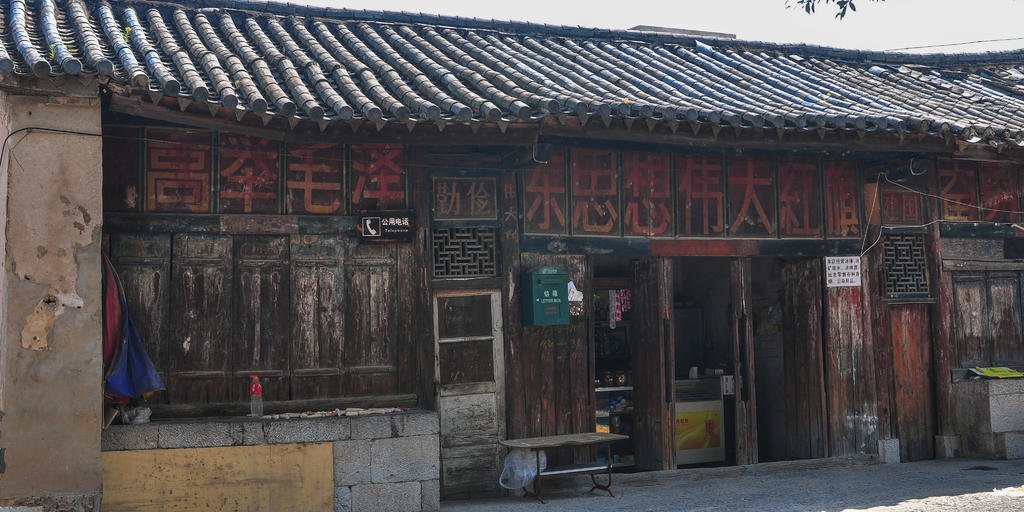You are using an out of date browser. It may not display this or other websites correctly.
You should upgrade or use an alternative browser.
You should upgrade or use an alternative browser.
Chiang Mai, Thailand to Yunan, China on a Honda CRF 250 L (& back)
- Thread starter KTMphil
- Start date
KTMphil
Senior member
KTMphil
Senior member
Grandma at the Yak butter tea stop keeping and eye on everything




KTMphil
Senior member
KTMphil
Senior member
Further south towards Shaxi and the crop hasn't been cut yet


This farmhouse was actually newly constructed in traditional style



This farmhouse was actually newly constructed in traditional style

KTMphil
Senior member
We're now back in the Yangtze River valley which will take us south to the historic tea horse trail town of Shaxi


A long day, just under 8 hours of moving time and we arrive that the best located hotel in the heart of Shaxi (Sha-shi)

The Chinese were taking more photographs of the bikes than they were of the 600 year old surrounding buildings

The view of the old theater opposite our hotel, stupendous



A long day, just under 8 hours of moving time and we arrive that the best located hotel in the heart of Shaxi (Sha-shi)

The Chinese were taking more photographs of the bikes than they were of the 600 year old surrounding buildings

The view of the old theater opposite our hotel, stupendous

KTMphil
Senior member
A typical farmhouse in the Yangtze River valley, most homes had corn, barley and rice drying

....more to come - Shuanglang (1897m) tomorrow, we're hoping for this nasty weather to move on.

....more to come - Shuanglang (1897m) tomorrow, we're hoping for this nasty weather to move on.
KTMphil
Senior member
It was the first time we'd stayed in this hotel id Shaxi, we found it last time we were here and knew at first it was the best spot in town
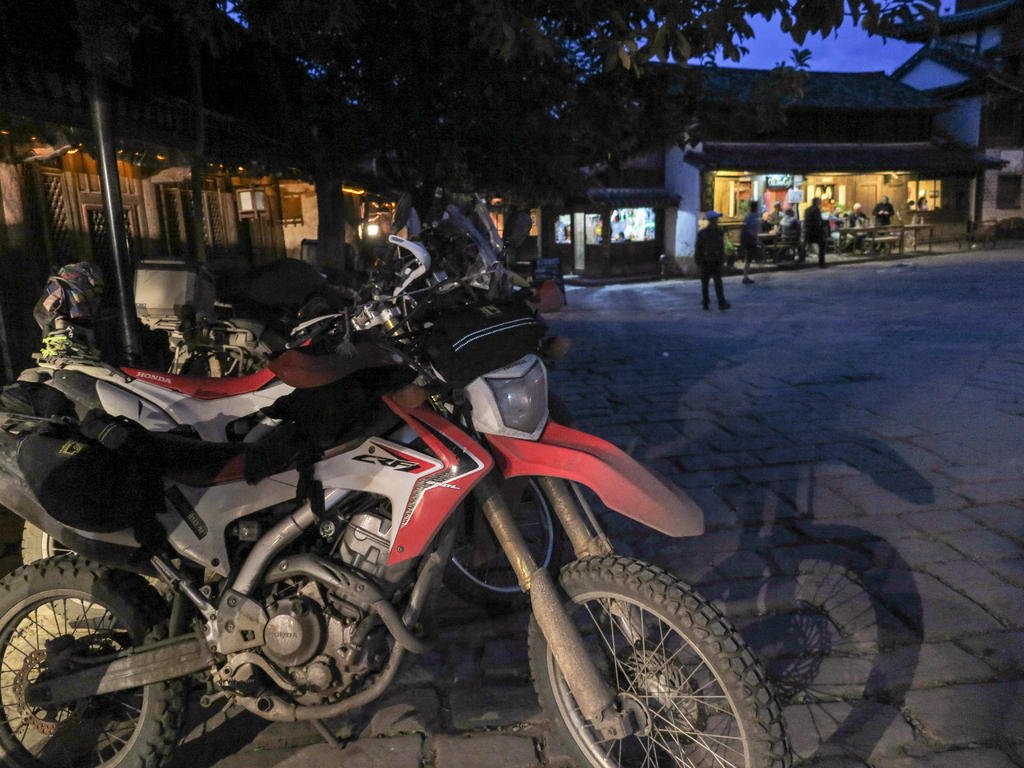
Oddvar's room with it's authentic 600 year old walls
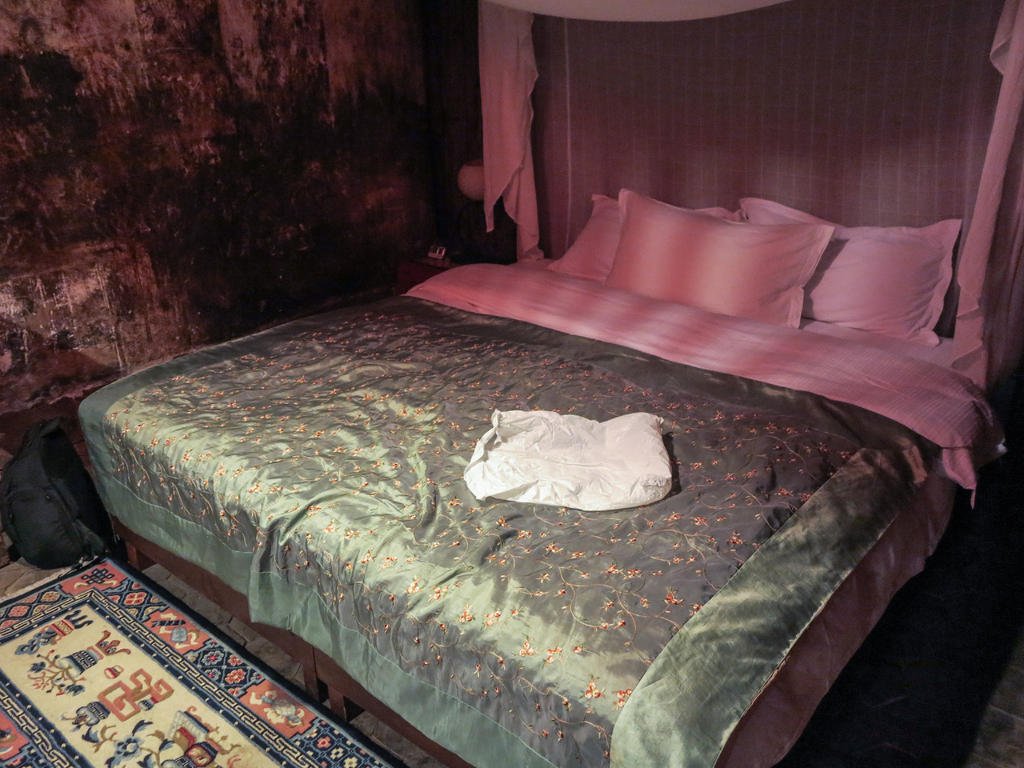
Shaxi at dusk
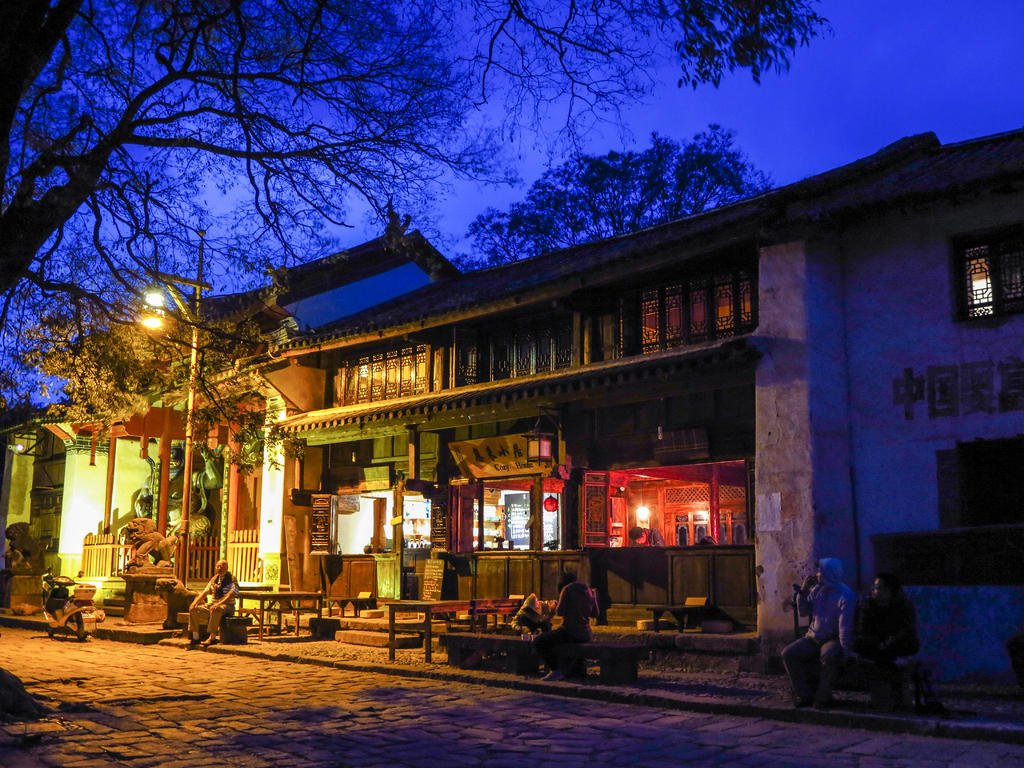
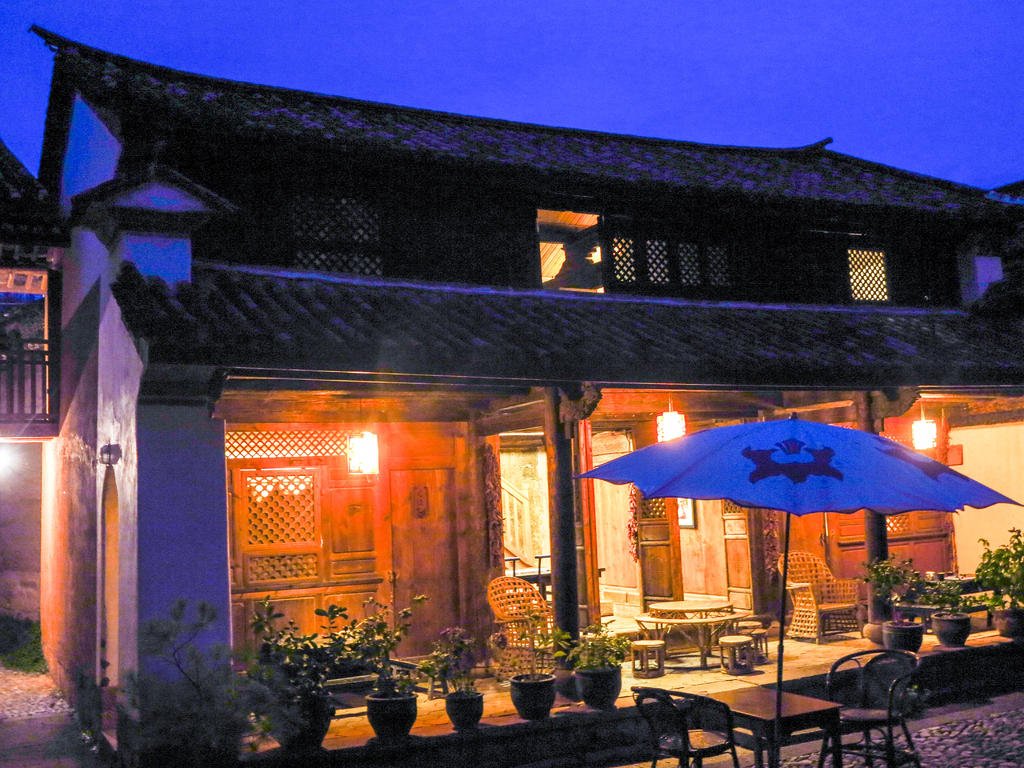
Time for the first one of these
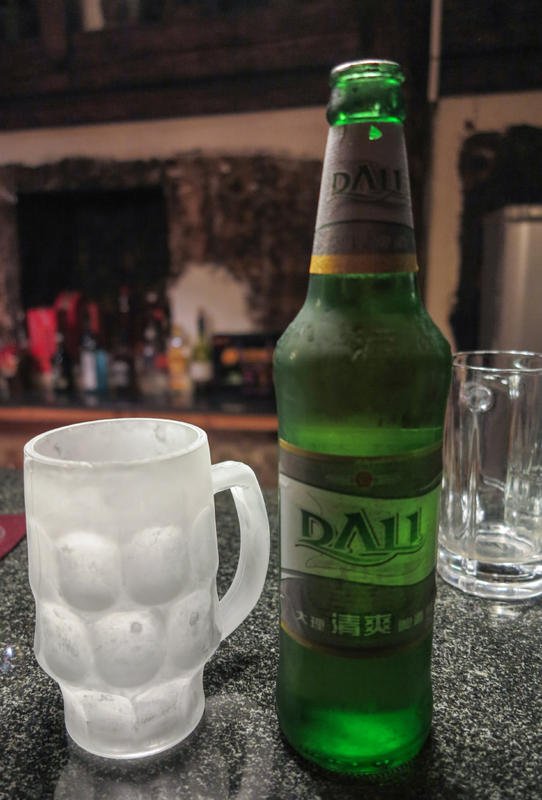
This Taiwanese owned hotel is superb in every way, total class. Even the food was outstanding.
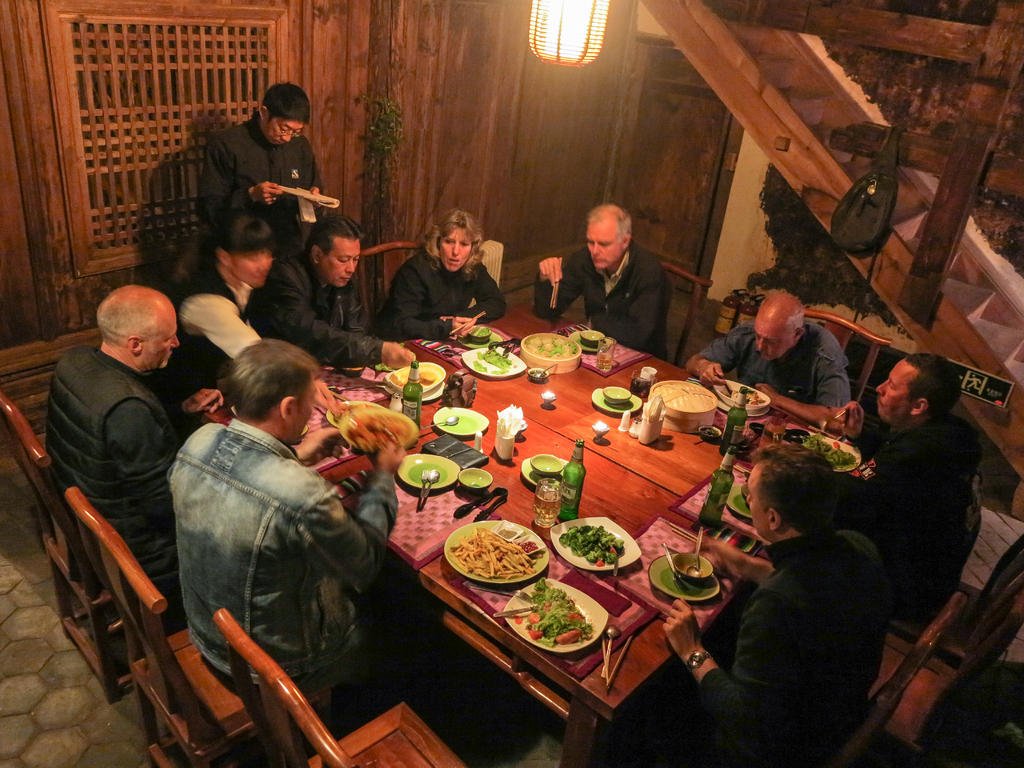
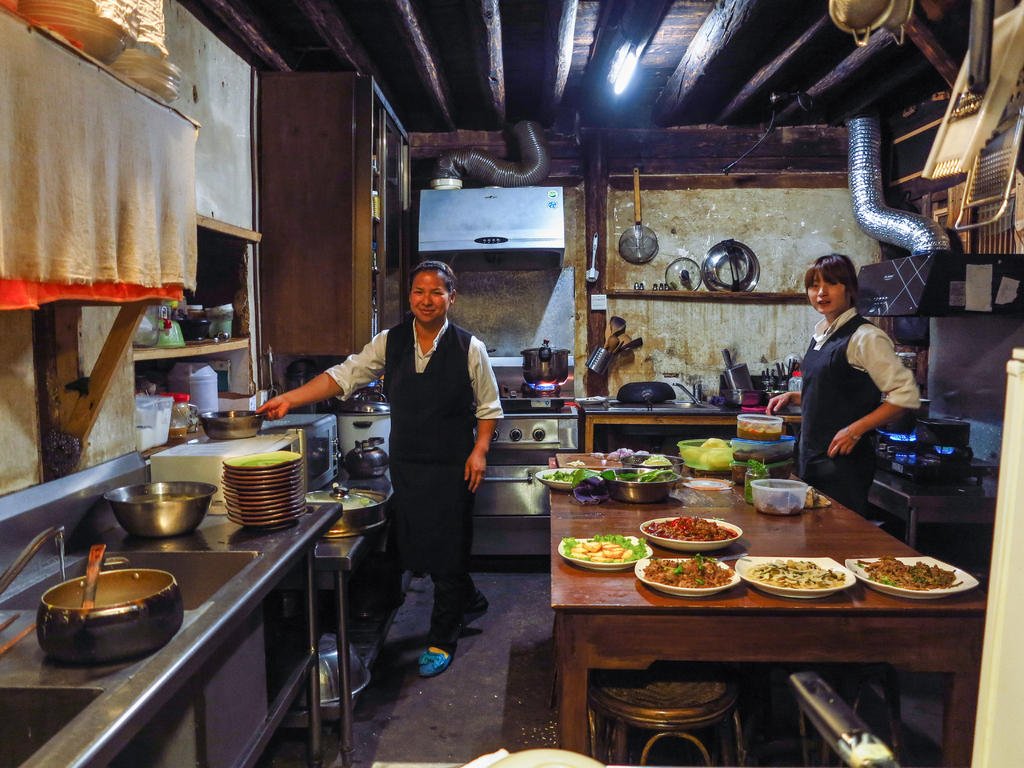
Everyone liked the style of this hotel
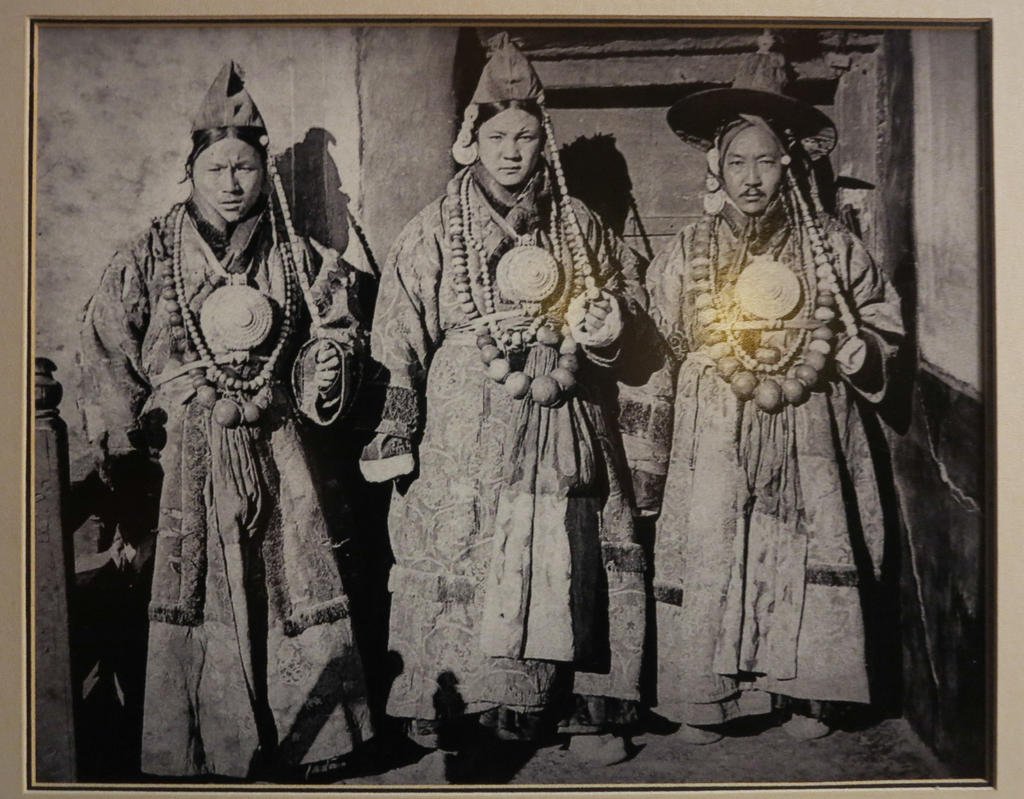
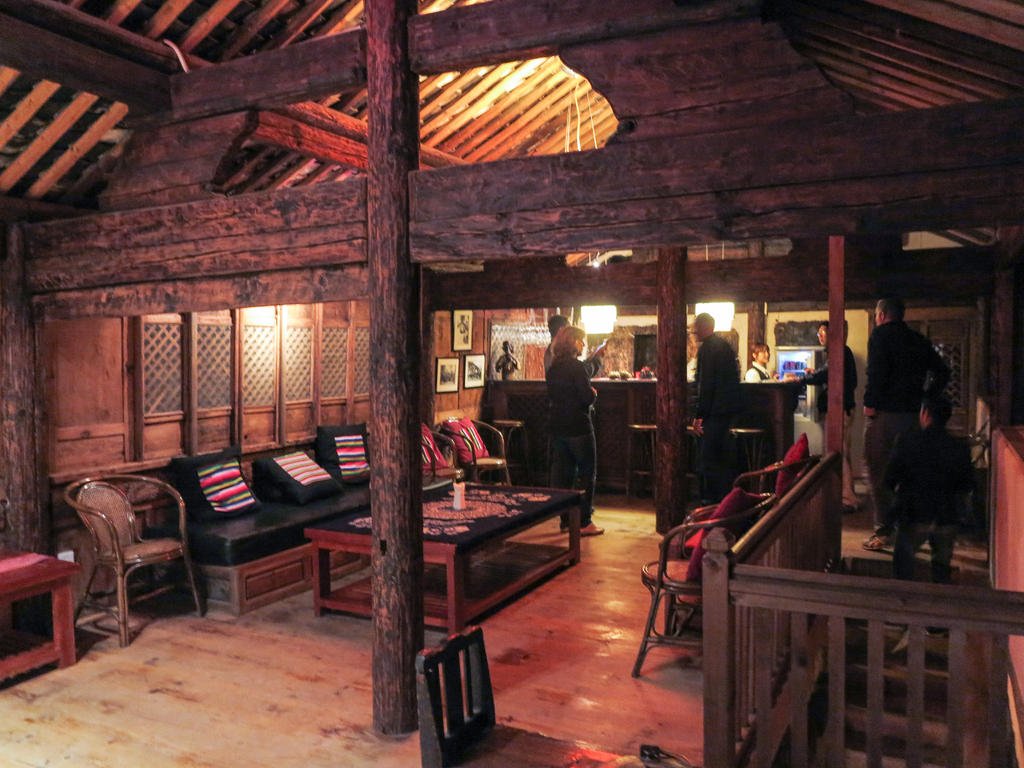

Oddvar's room with it's authentic 600 year old walls

Shaxi at dusk


Time for the first one of these

This Taiwanese owned hotel is superb in every way, total class. Even the food was outstanding.


Everyone liked the style of this hotel


KTMphil
Senior member
A late start, so time for a few photo's around the only remaining authentic Tea Horse Trail town. We've been told it survived the cultural revolution because it was hidden in the valley.
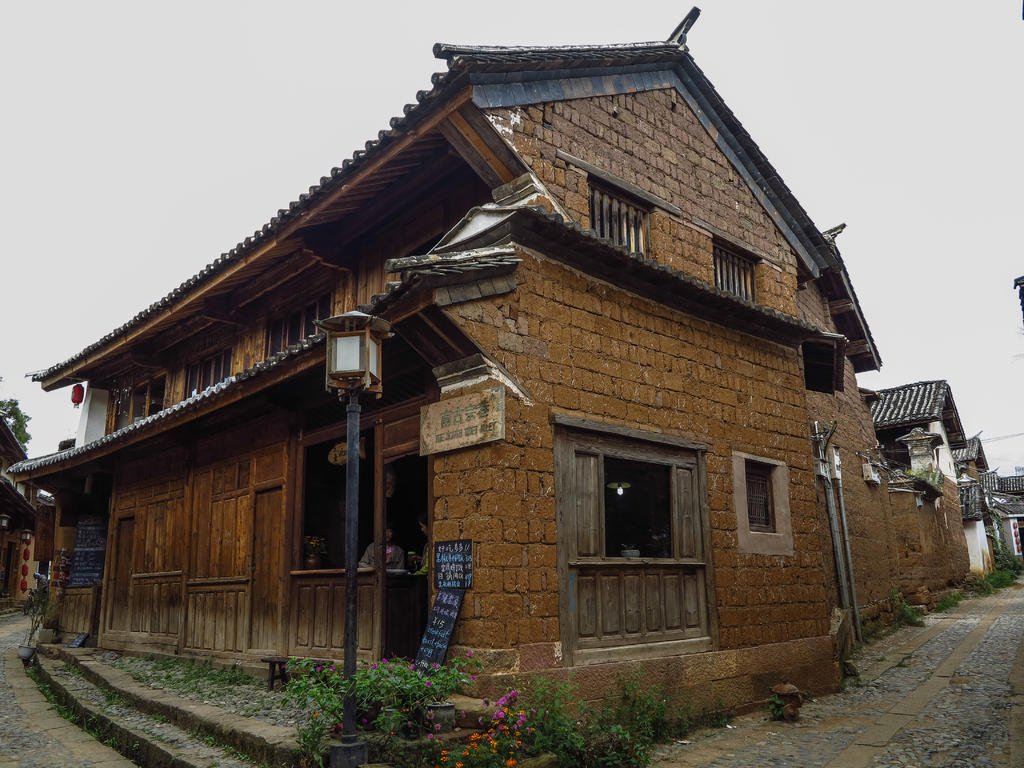
From Wikipedia, the free encyclopedia
Jump to: navigation, search
Shaxi (Chinese: 沙溪) is a historic market town in Jianchuan County, Dali Prefecture, Yunnan province, China. It is located roughly halfway between Dali and Lijiang.
The Sideng market square of Shaxi was added to the World Monuments Watch List of 100 Most Endangered Sites in 2001.[SUP][1][/SUP]
Shaxi started as a trading point for tea and horses during the Tang Dynasty (618 – 907). The prosperity of the town was at its height during the Ming and Qing dynasties (1368–1912).
It is probably the most intact horse caravan town on the Ancient tea route leading from Yunnan into Burma and Tibet[SUP][2][/SUP] and is now being preserved through a cooperation between the Swiss Federal Institute of Technology Zürich (ETH) and the People’s Government of Jianchuan County.[SUP][3][/SUP]
Nearby Shibao mountain contains Buddhist rock carvings and temples of over 1300 years old with, amongst others, images of the bodhisattva Guanyin.
The two main ethnic groups of Shaxi are the Bai and Yi people.
More info and photo's regarding Shaxi in the links below:
http://www.rideasia.net/motorcycle-...-north-west-china-tibet-border.html#post16320
& here:
http://www.rideasia.net/motorcycle-...-karpo-6-740-meters-22-113-a-9.html#post29869
& some good restoration info in the link below:
The Pear Orchard Temple, Shaxi Yunnan China

From Wikipedia, the free encyclopedia
Jump to: navigation, search
Shaxi (Chinese: 沙溪) is a historic market town in Jianchuan County, Dali Prefecture, Yunnan province, China. It is located roughly halfway between Dali and Lijiang.
The Sideng market square of Shaxi was added to the World Monuments Watch List of 100 Most Endangered Sites in 2001.[SUP][1][/SUP]
Shaxi started as a trading point for tea and horses during the Tang Dynasty (618 – 907). The prosperity of the town was at its height during the Ming and Qing dynasties (1368–1912).
It is probably the most intact horse caravan town on the Ancient tea route leading from Yunnan into Burma and Tibet[SUP][2][/SUP] and is now being preserved through a cooperation between the Swiss Federal Institute of Technology Zürich (ETH) and the People’s Government of Jianchuan County.[SUP][3][/SUP]
Nearby Shibao mountain contains Buddhist rock carvings and temples of over 1300 years old with, amongst others, images of the bodhisattva Guanyin.
The two main ethnic groups of Shaxi are the Bai and Yi people.
More info and photo's regarding Shaxi in the links below:
http://www.rideasia.net/motorcycle-...-north-west-china-tibet-border.html#post16320
& here:
http://www.rideasia.net/motorcycle-...-karpo-6-740-meters-22-113-a-9.html#post29869
& some good restoration info in the link below:
The Pear Orchard Temple, Shaxi Yunnan China
KTMphil
Senior member
This ancient Tea Horse Trail town is a photographers delight, you'll never see anything like this anywhere that's authentic






As on many entrances, pictures famous ancient warriors guard the premises










As on many entrances, pictures famous ancient warriors guard the premises




KTMphil
Senior member
Getting ready to leave & the bikes were getting more attention than the ancient surroundings

Mr. R making new friends

As we were leaving with all our robocop gear on it really got their interest


Mr. R making new friends

As we were leaving with all our robocop gear on it really got their interest

KTMphil
Senior member
Drizzle and a little chilly, we make our way towards Shuanglang. This must have ruined this chaps day.


KTMphil
Senior member
Into a drizzly Shuanglang, the rain just stops as we arrive of course

Hotel has good secure parking and right in town on the eastern side of the lake



Hotel has good secure parking and right in town on the eastern side of the lake


KTMphil
Senior member
Erhai Lake to the west of Shuanglang, with the mountain backdrop is a more interesting stop than Dali old town most people were saying. We managed have a look around before it got dark.
View attachment 21633
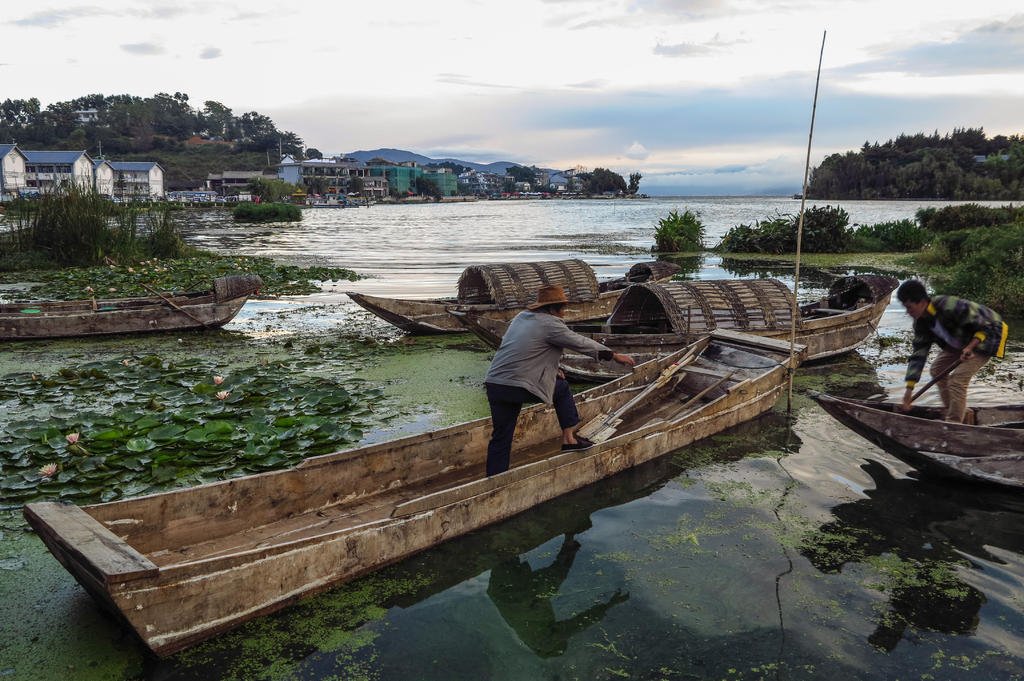
Wiki:
Erhai Lake - Wikipedia, the free encyclopedia
Erhai is situated at 1,972 metres (6,470 ft) above sea level. In size, the North-South length of the lake is 40 kilometres (25 mi) and the East-West width is roughly 7–8 kilometres (4.3–5.0 mi). Its area is 250 square kilometres (97 sq mi), making it the second largest highland lake of China, after Dianchi Lake. Its circumference reaches 116 kilometres (72 mi), its average depth is of 11 metres (36 ft) and the total storage capacity of 2.5 billion cubic metres (2,000,000 acre·ft).
The lake is sandwiched between the Cangshan Mountains to the West and Dali City. It starts at Dengchuan at its northern extremity and finishes at Xiaguan city in the South, receiving water from the Miju and Mici Rivers (in the North), the Bolou River (in the East) and smallers streams from the Cangshan Mountains. Yangbi River is the lake's outlet in the South and eventually flows into the Lancang River (Mekong River).
Dusk, the last of the sunset poking through the clouds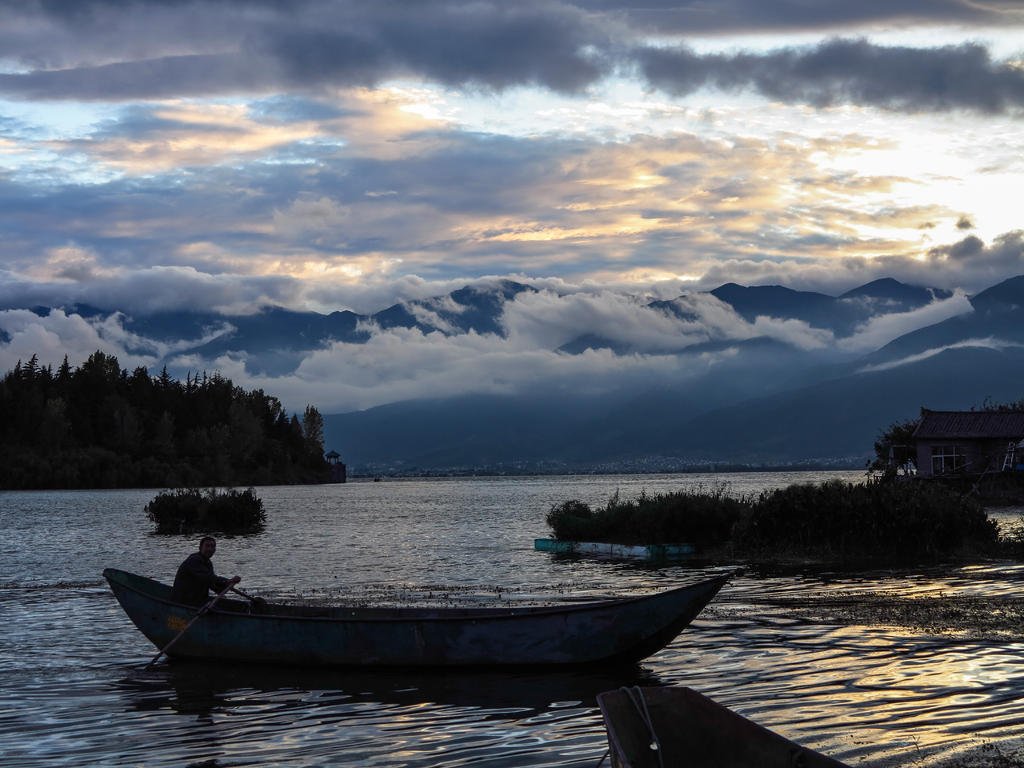
View attachment 21633

Wiki:
Erhai Lake - Wikipedia, the free encyclopedia
Erhai is situated at 1,972 metres (6,470 ft) above sea level. In size, the North-South length of the lake is 40 kilometres (25 mi) and the East-West width is roughly 7–8 kilometres (4.3–5.0 mi). Its area is 250 square kilometres (97 sq mi), making it the second largest highland lake of China, after Dianchi Lake. Its circumference reaches 116 kilometres (72 mi), its average depth is of 11 metres (36 ft) and the total storage capacity of 2.5 billion cubic metres (2,000,000 acre·ft).
The lake is sandwiched between the Cangshan Mountains to the West and Dali City. It starts at Dengchuan at its northern extremity and finishes at Xiaguan city in the South, receiving water from the Miju and Mici Rivers (in the North), the Bolou River (in the East) and smallers streams from the Cangshan Mountains. Yangbi River is the lake's outlet in the South and eventually flows into the Lancang River (Mekong River).
Dusk, the last of the sunset poking through the clouds

KTMphil
Senior member
KTMphil
Senior member
KTMphil
Senior member
South out of Shuanlang, passing down the eastern side of Erhai Lake, even on a dull day, it's spectaular


We met this adventure rider from Kunming that had ridden this 150cc bike up into Tibet!



We met this adventure rider from Kunming that had ridden this 150cc bike up into Tibet!

KTMphil
Senior member
Nasty traffic jams getting into Kunming city, tonight going fancy, The Grand Park Kunming Hotel, USD$ 110 a night
Wherever you park motorcycles in fancy hotels in China, the will ALWAYS ask you to move them, even if it's the most logical spot

Gorgeous rooms, this will be a good night sleep for sure, huge rooms


Interesting view over Kunming too

Wherever you park motorcycles in fancy hotels in China, the will ALWAYS ask you to move them, even if it's the most logical spot

Gorgeous rooms, this will be a good night sleep for sure, huge rooms


Interesting view over Kunming too

KTMphil
Senior member
... Rest day in Kunming tomorrow, some of the rider's are off to see the unusual Stone Forest ( Stone Forest - Wikipedia, the free encyclopedia ), I'll have a wander around Green Lake and watch the cultural activities.
KTMphil
Senior member
In the last 6 months in China, they've released a 400cc adventure bike.What makes it interesting is that the engine is a copy of the air cooled Honda XR 400 engine, which has a great reputation for reliability and simplicity.
Bring on the Shineray GX 400 Motor. 30,000 Yuan road registered/ USD$ 5,000 makes it worth a look with the copy XR 400 engine

We managed to persuade them to bring it out of the showroom so we could test it, Mr. R giving it a close inspection

They rigged up a fuel bottle for a test ride

Suspension felt ok for a cheap bike



I took it for a spin and was surprised how much power there was, it was night and day different from a 250, very heavy though, we were told around 170kg

The gear selector shaft protruded out of the engine casing and looked a huge weak spot if hit on some rocks in a fall

The XR 400 copy engine

Once we'd got it out of th showroom, the locals were keen to give it a go too

Bring on the Shineray GX 400 Motor. 30,000 Yuan road registered/ USD$ 5,000 makes it worth a look with the copy XR 400 engine

We managed to persuade them to bring it out of the showroom so we could test it, Mr. R giving it a close inspection

They rigged up a fuel bottle for a test ride

Suspension felt ok for a cheap bike



I took it for a spin and was surprised how much power there was, it was night and day different from a 250, very heavy though, we were told around 170kg

The gear selector shaft protruded out of the engine casing and looked a huge weak spot if hit on some rocks in a fall

The XR 400 copy engine

Once we'd got it out of th showroom, the locals were keen to give it a go too

Lao2stroker
Senior Member
- Joined
- May 25, 2011
- Bikes
- I have too many bikes....
some of those look like paintings....just unreal, the camera is part of it, but the composure, the color, so incredible.
KTMphil
Senior member
Leaving Kunming, we approached this Chinese policeman who's excitement overwhelmed him
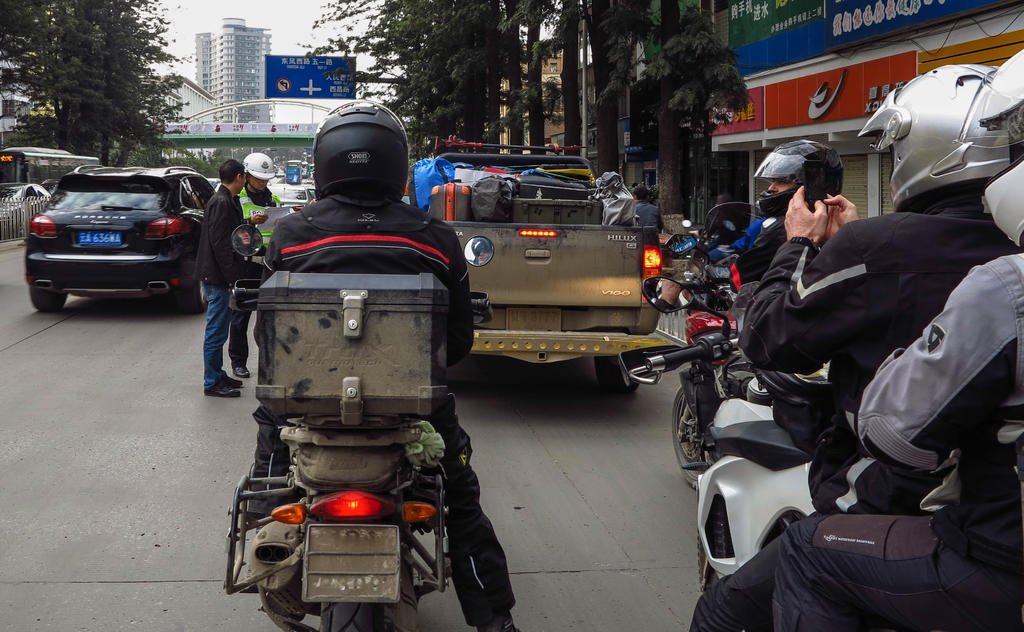
Lot's of radio-ing and other Chinese officers turning up, after carefully examining our temporary Chinese registrations and driving licenses, after about 15 minutes we were free to go.
A beautiful old temple on the way south
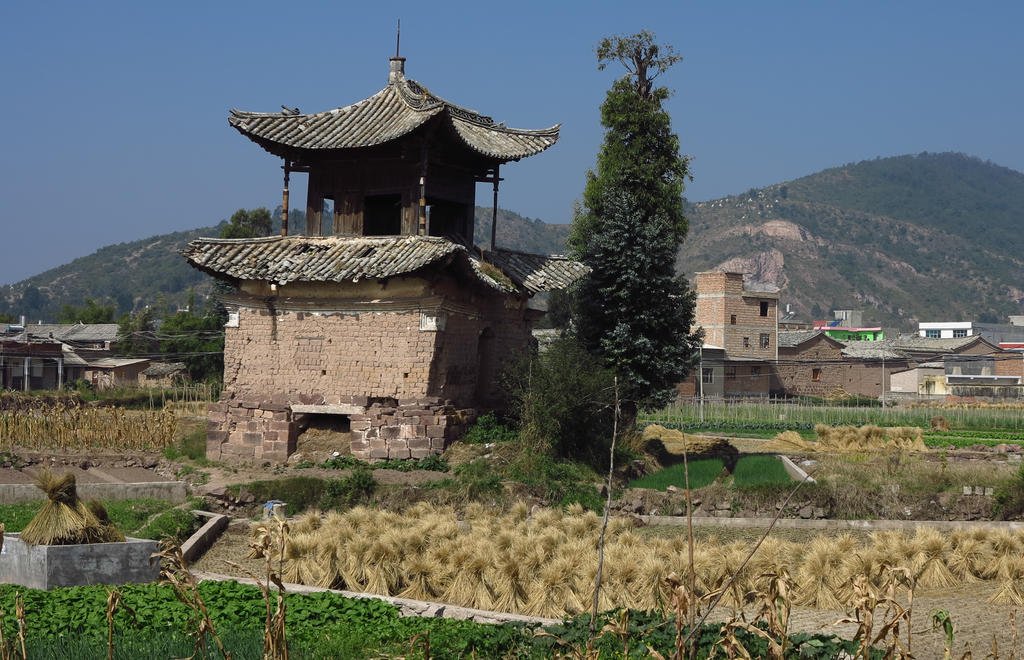
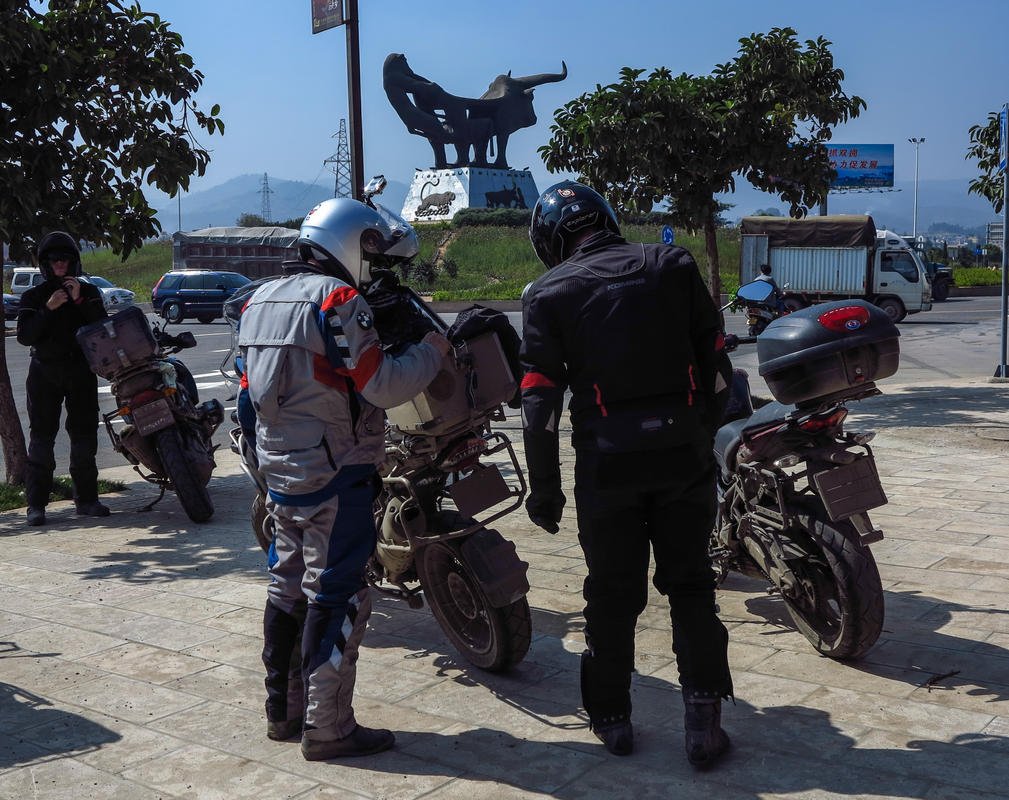

Lot's of radio-ing and other Chinese officers turning up, after carefully examining our temporary Chinese registrations and driving licenses, after about 15 minutes we were free to go.
A beautiful old temple on the way south


KTMphil
Senior member
KTMphil
Senior member
KTMphil
Senior member
KTMphil
Senior member
Rest day in Jian Shui, so off to the Tuan Shan ancient village on the bikes
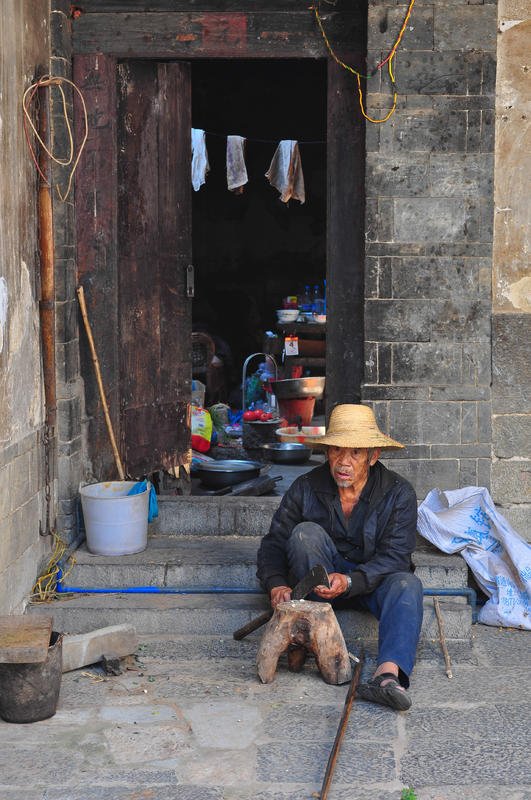
From : Yunnan Tuanshan Village - China culture

From : Yunnan Tuanshan Village - China culture
Located at Xizhuang Township, Jianshui County, Honghe Hani & Yi Autonomous Prefecture in southern Yunnan Province, Tuanshan Village is the only intact famous cultural village of the Qing Dynasty existed currently which was ever the habitation of the Yi ethnic minority in history.
In Tuanshan Village, there are residential complexes built 600 years ago which have well reserved the characteristics and social and humanistic environment of the Southern Yunnan villages in the 19th century and 26 best preserved traditional folk houses and ancient buildings of the late Qing Dynasty, for which the village is reputed as "Loulan Ancient City in Yunnan".The extant old architectures consist of traditional Han Chinese courtyard built of grey bricks, tuzhangfang (earth-rammed house) of Yi ethnic group and the tuzhangfang with tile eaves of combined Han and Yi style. The building complex includes those courtyard houses of one hall, two halls and three halls as well as those of crisscross yards, covering the traditional residential forms of "four-side courtyard house with five raise headings", "three-side courtyard house with a screen wall facing the gate" and "horse running building" (Square courtyard with two-layer buildings on four sides in which the corridors are connecting with each other so that "the horse can run on the corridor") in Yunnan. All the houses stand facing east and exposed to the sun. Walking down the old flagstone paved road of the village, you would be aware of the 19th-century farming culture in southern Yunan Province as well as the supplemented humanistic culture which are reflected in various aspects from the architecture, sculpture, painting to calligraphy, couplets, poems and local customs.As the architectures were built along the mountains at high ground by sophisticated materials in elaborate workmanship, and there have been residents living there from generation to generation, Tuanshan Village is able to be preserved intact up to the present. Now, the small village has drawn the attention of the whole world thanks to its unique building complexes.
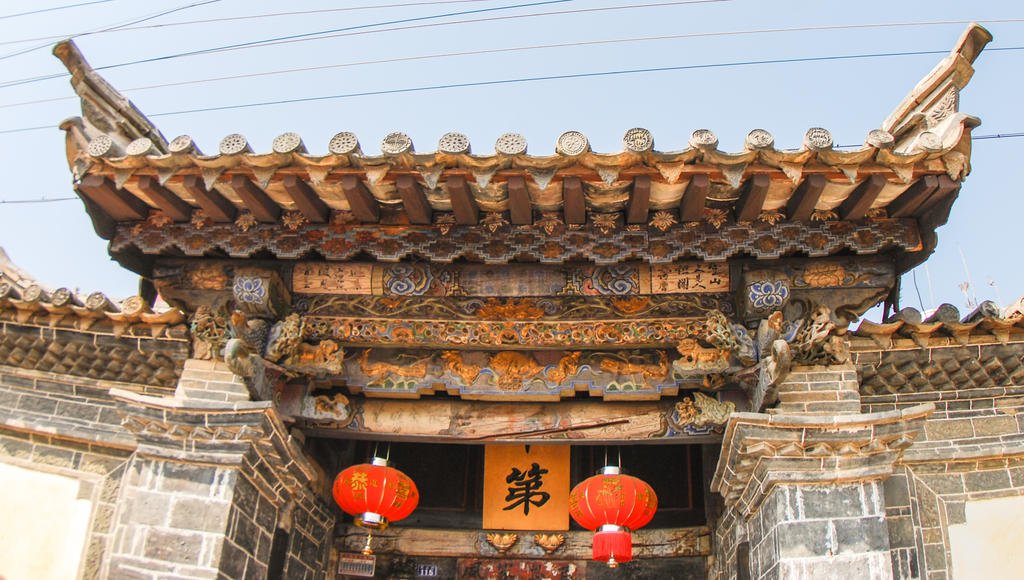
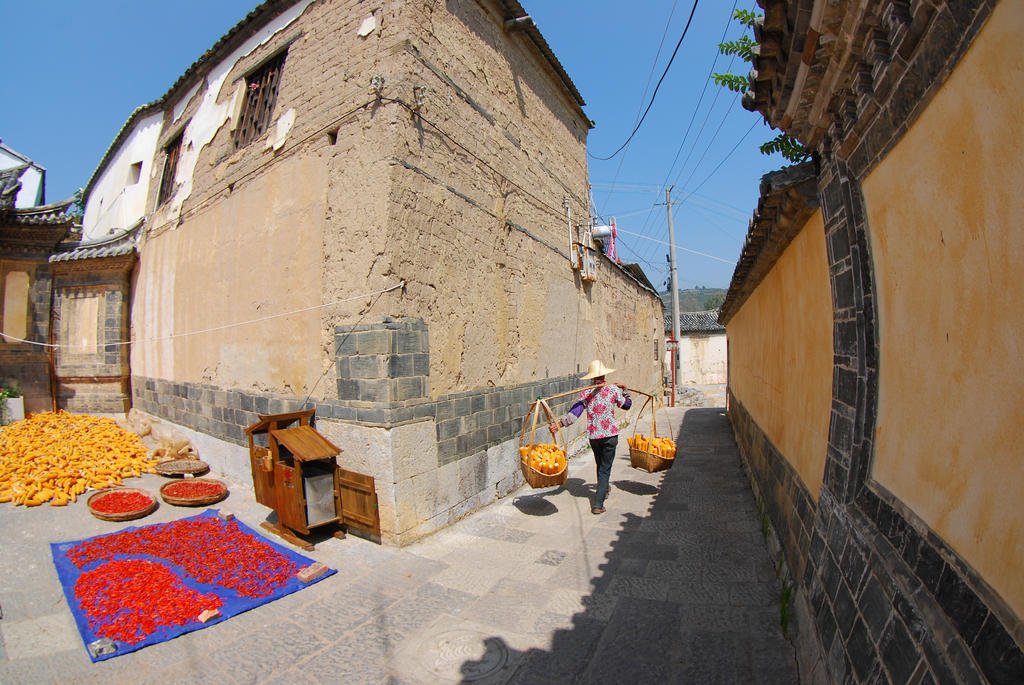
In Tuanshan Village, there are residential complexes built 600 years ago which have well reserved the characteristics and social and humanistic environment of the Southern Yunnan villages in the 19th century and 26 best preserved traditional folk houses and ancient buildings of the late Qing Dynasty, for which the village is reputed as "Loulan Ancient City in Yunnan".The extant old architectures consist of traditional Han Chinese courtyard built of grey bricks, tuzhangfang (earth-rammed house) of Yi ethnic group and the tuzhangfang with tile eaves of combined Han and Yi style. The building complex includes those courtyard houses of one hall, two halls and three halls as well as those of crisscross yards, covering the traditional residential forms of "four-side courtyard house with five raise headings", "three-side courtyard house with a screen wall facing the gate" and "horse running building" (Square courtyard with two-layer buildings on four sides in which the corridors are connecting with each other so that "the horse can run on the corridor") in Yunnan. All the houses stand facing east and exposed to the sun. Walking down the old flagstone paved road of the village, you would be aware of the 19th-century farming culture in southern Yunan Province as well as the supplemented humanistic culture which are reflected in various aspects from the architecture, sculpture, painting to calligraphy, couplets, poems and local customs.As the architectures were built along the mountains at high ground by sophisticated materials in elaborate workmanship, and there have been residents living there from generation to generation, Tuanshan Village is able to be preserved intact up to the present. Now, the small village has drawn the attention of the whole world thanks to its unique building complexes.


KTMphil
Senior member
KTMphil
Senior member
Tuan Shan village
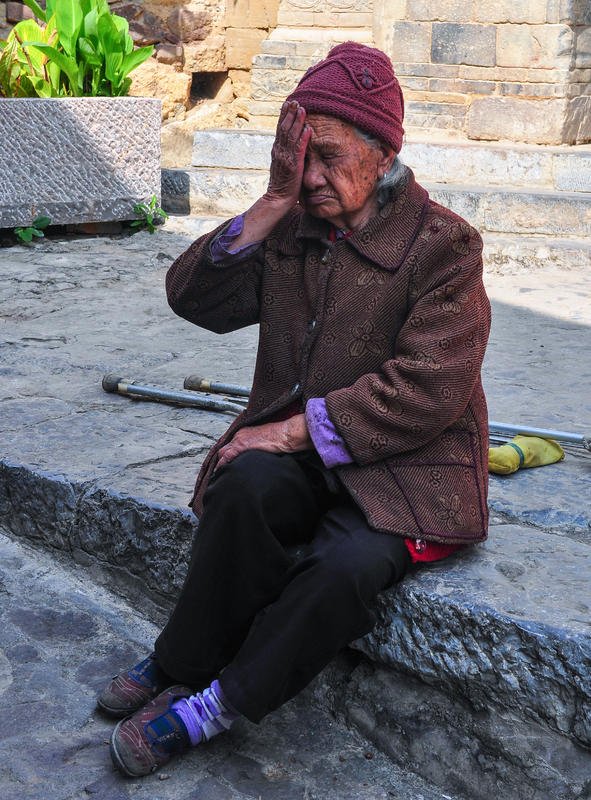
Photo's and memorabilia litter the town of the Chairman Mao era
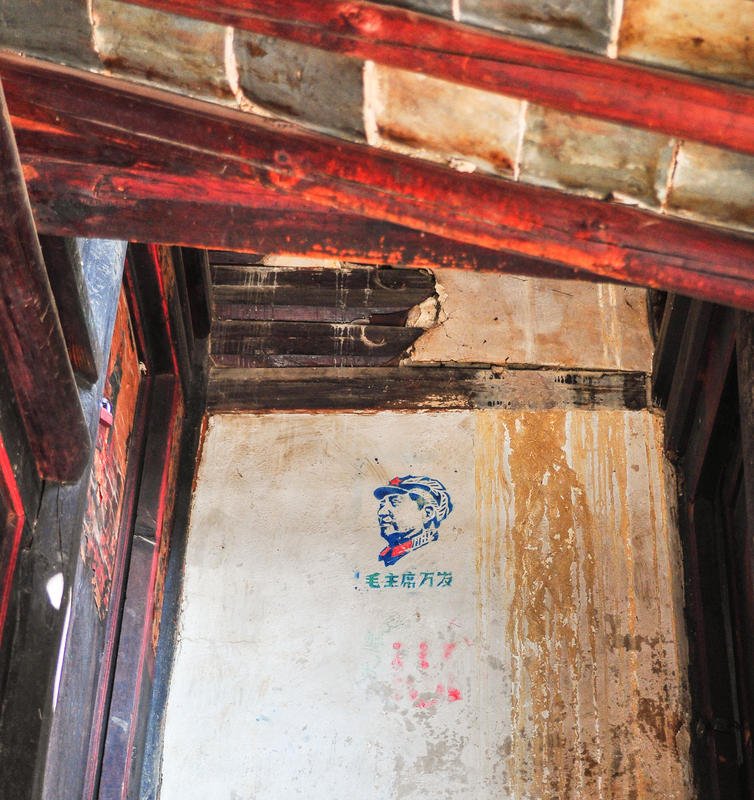
Beautiful paintings are everywhere
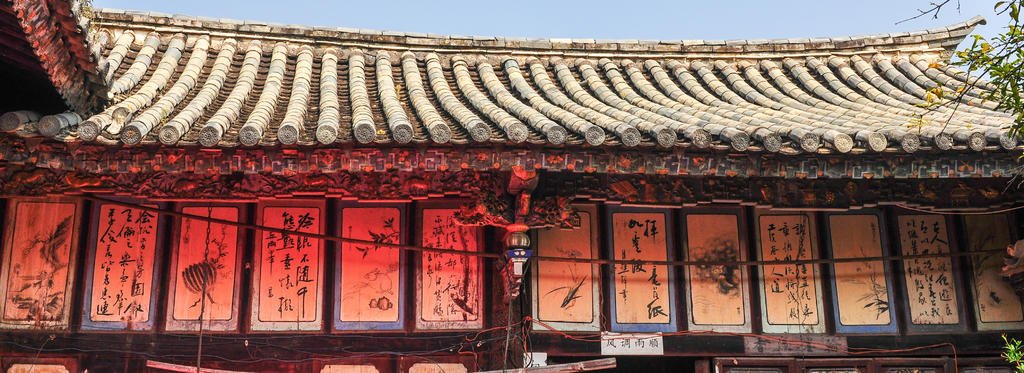
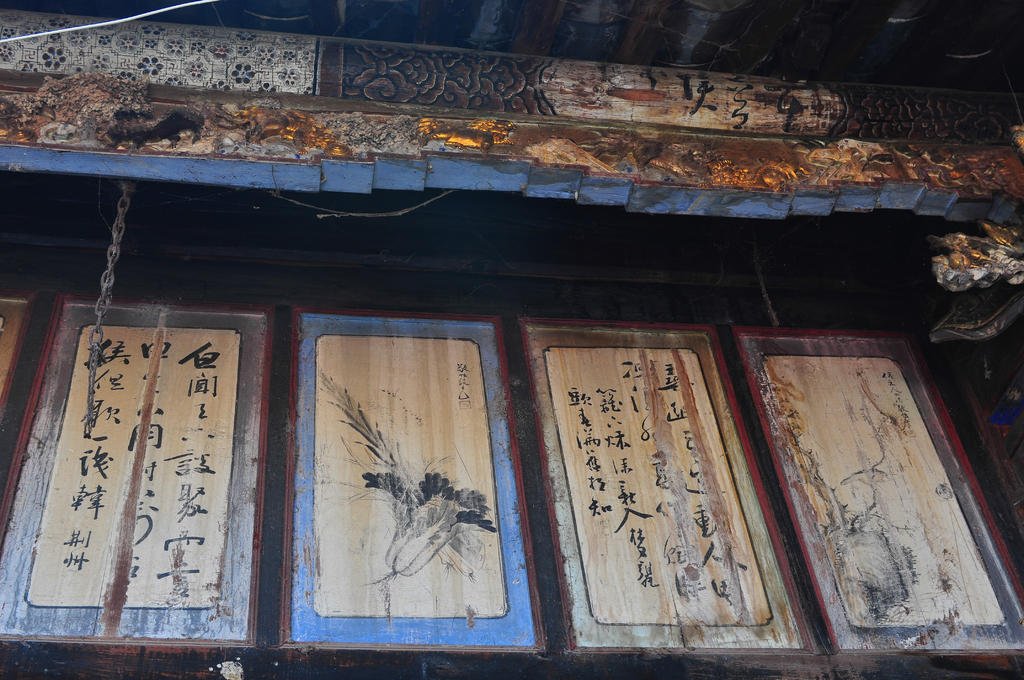

Photo's and memorabilia litter the town of the Chairman Mao era

Beautiful paintings are everywhere


KTMphil
Senior member
Into the beautifully restored Zhang family residence in Tuan Shan
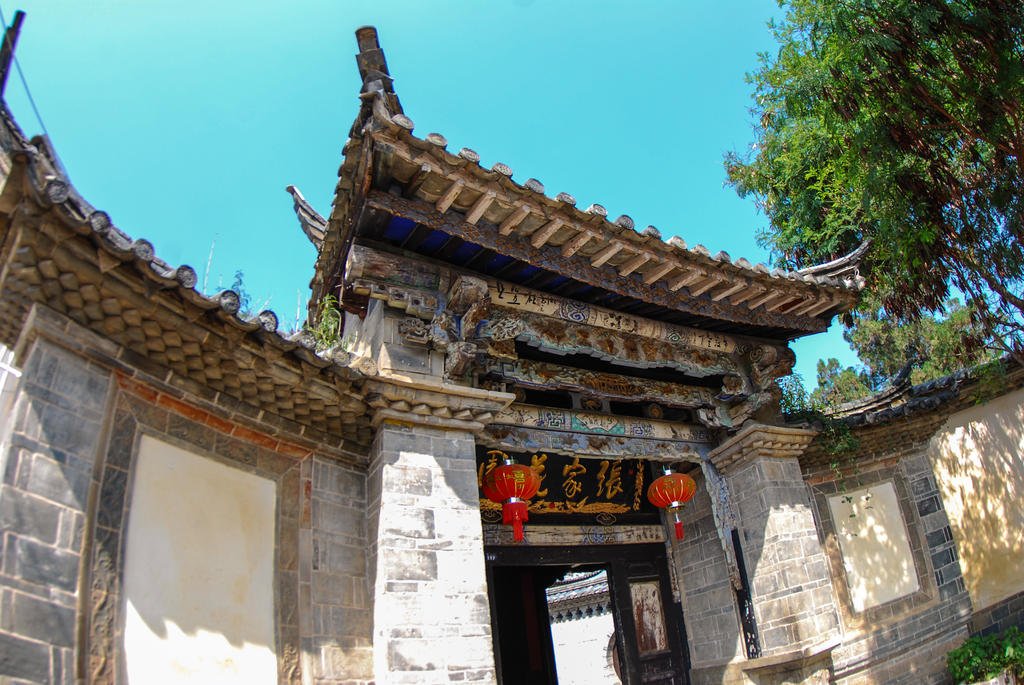
Its a typical Han tribal courtyard arrangement
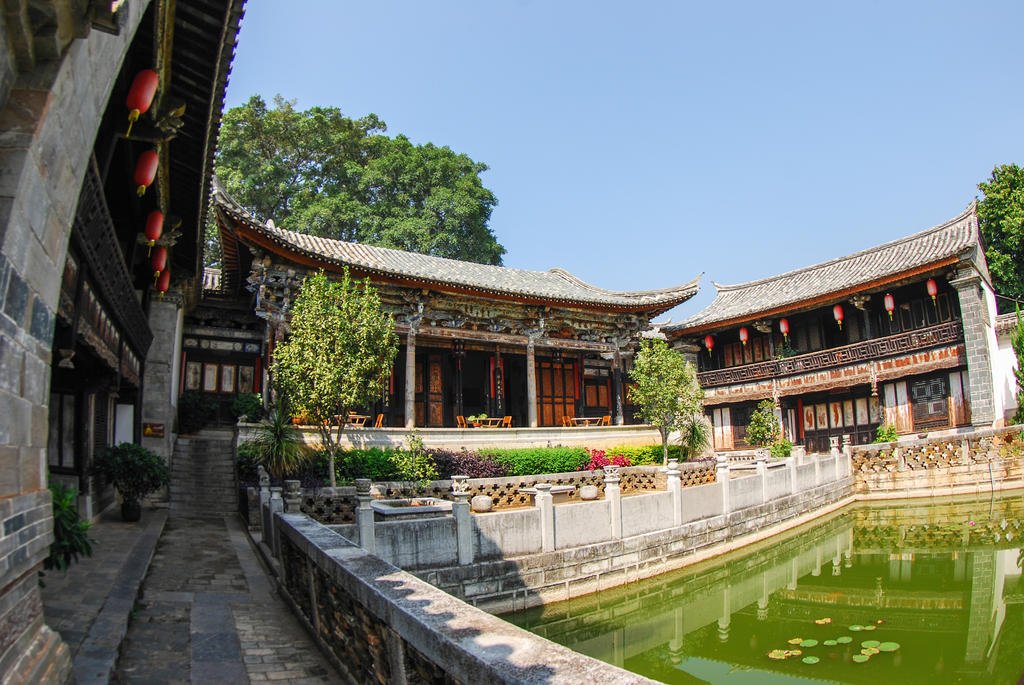
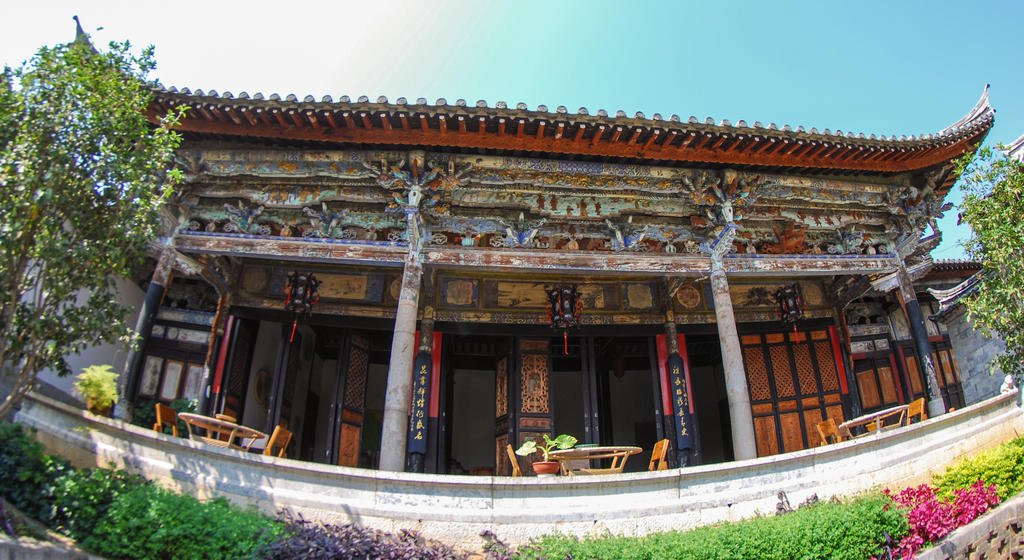
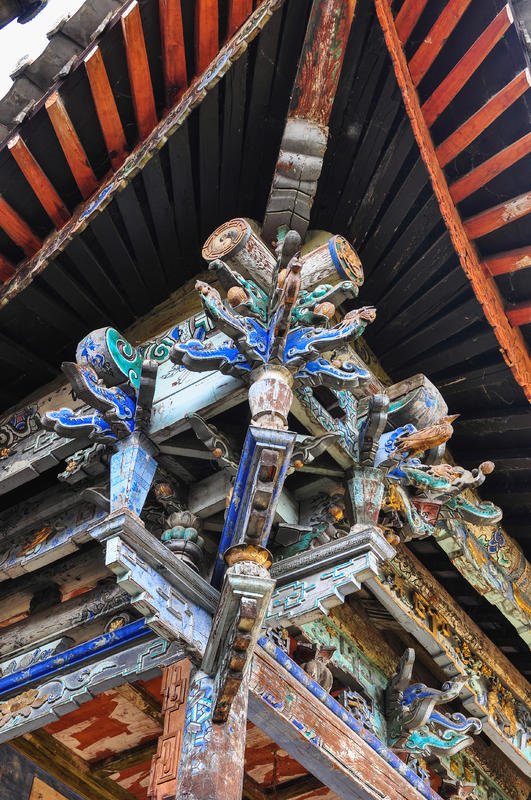
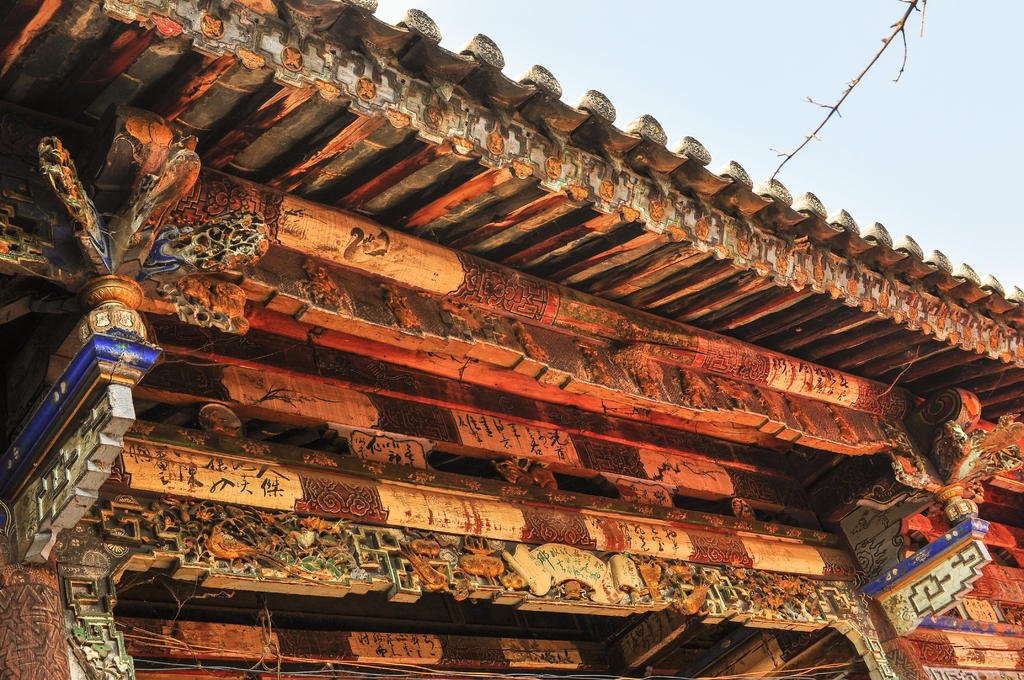
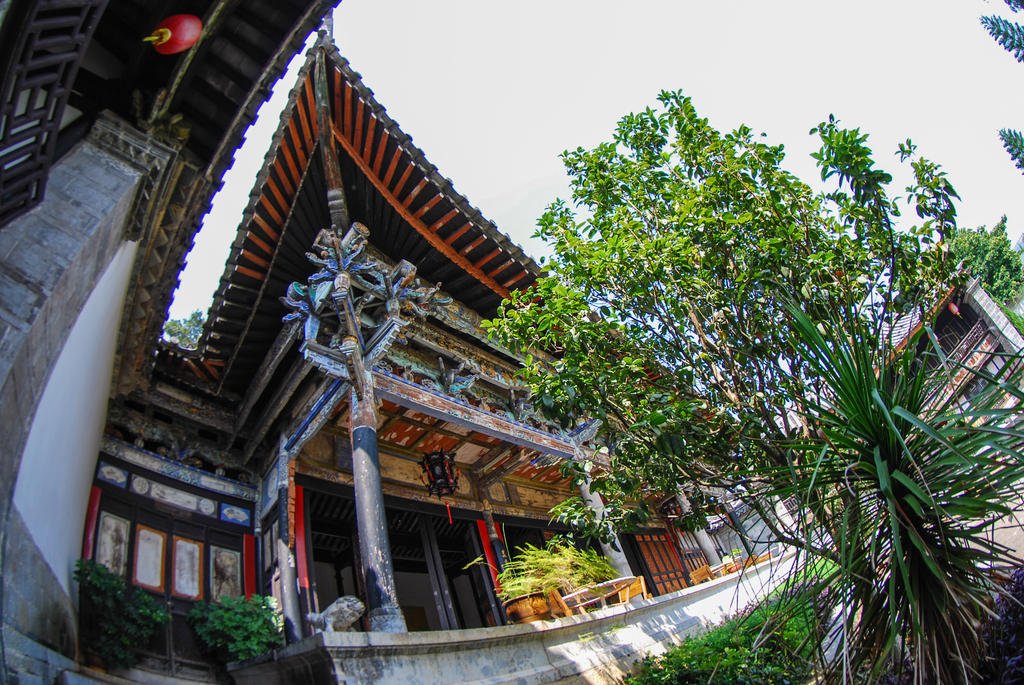

Its a typical Han tribal courtyard arrangement





KTMphil
Senior member
KTMphil
Senior member
5km from Jian Shui, you also have the spectacular Twin Dragon Bridge

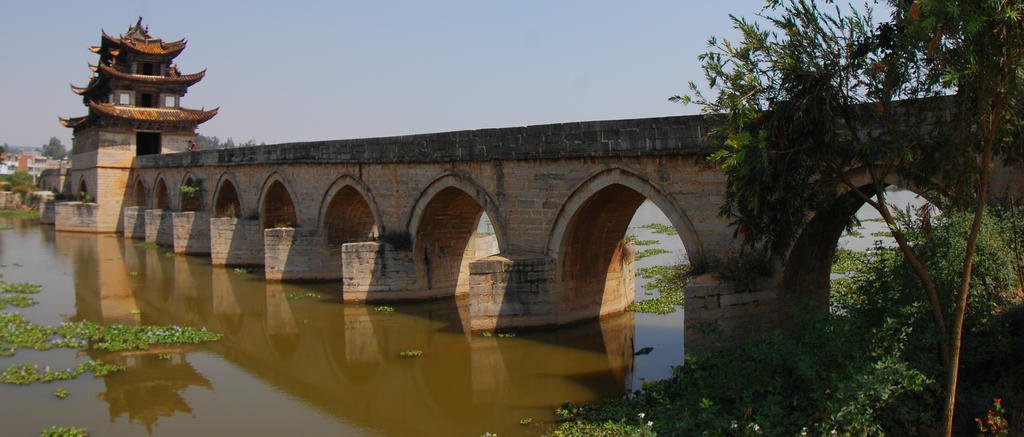
From: Twin Dragons Bridge, China Jianshui travel guide, Kunming tour Yunnan to Jianshui Shuanglong Bridge
Five kilometers west of Jianshui , at the confluence of Lujiang River are the Tachong River, lies Shuanglong Bridge. A combination of science and art, the stone bridge ranks first in Yunnan Province in terms of size and artistic value. It is now under provincial protection. When the bridge was built during the reign of Emperor Qianlong in the Qing Dynasty, it had only three arches on the north end. Later on, as the Tachong River changed its course, fourteen new bridge arches were added to the original ones and thus got the name "the Seventeen - Arch Bridge''. It is a masterpiece among ancient bridges in China.
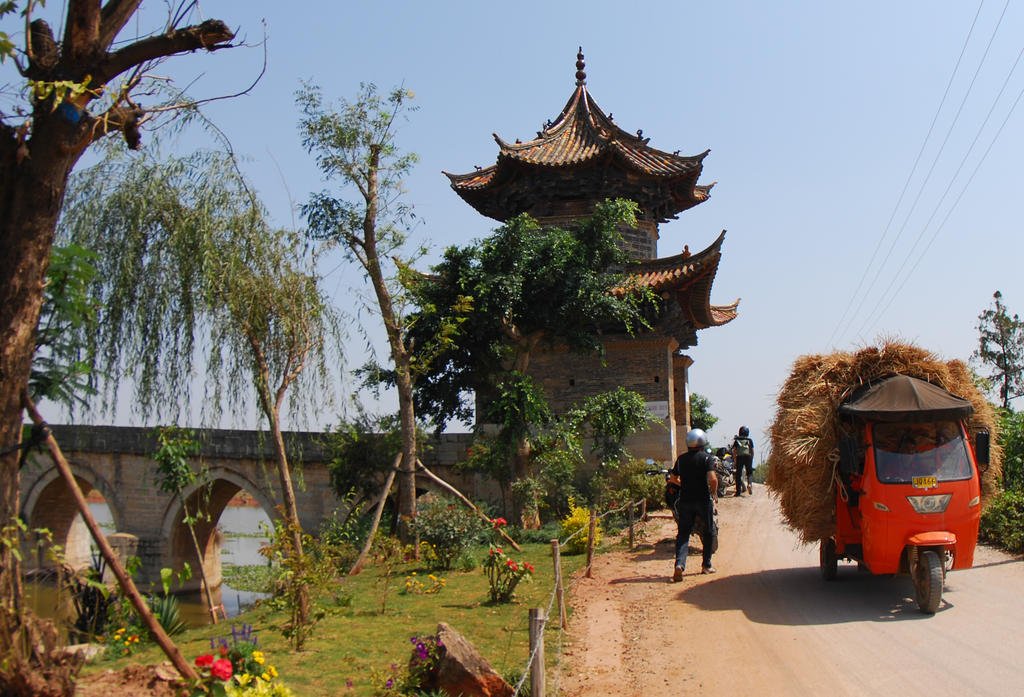
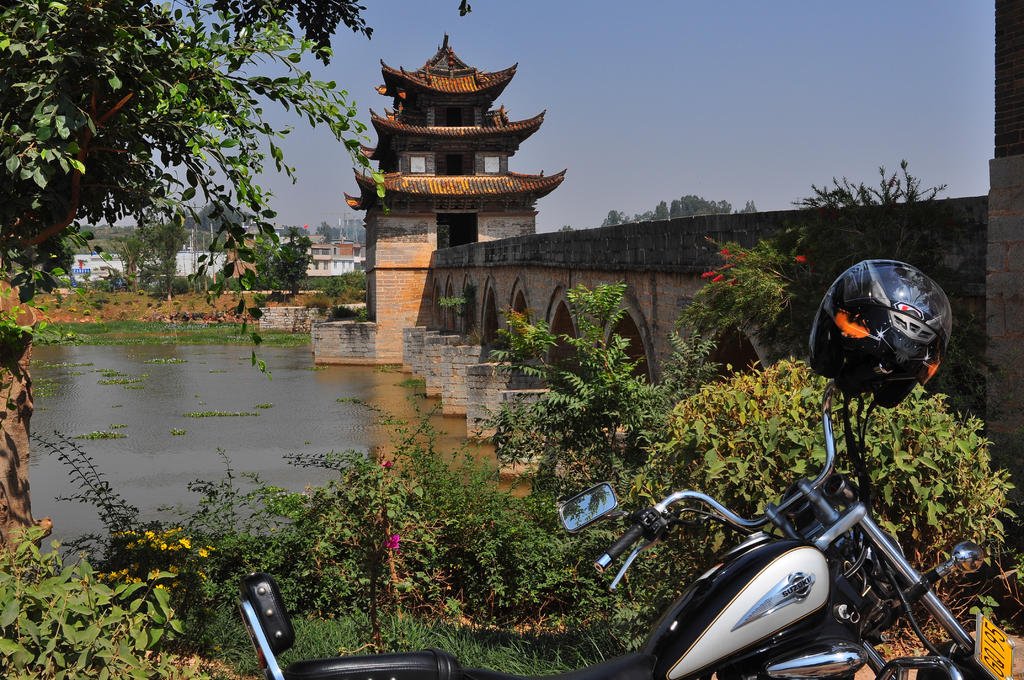
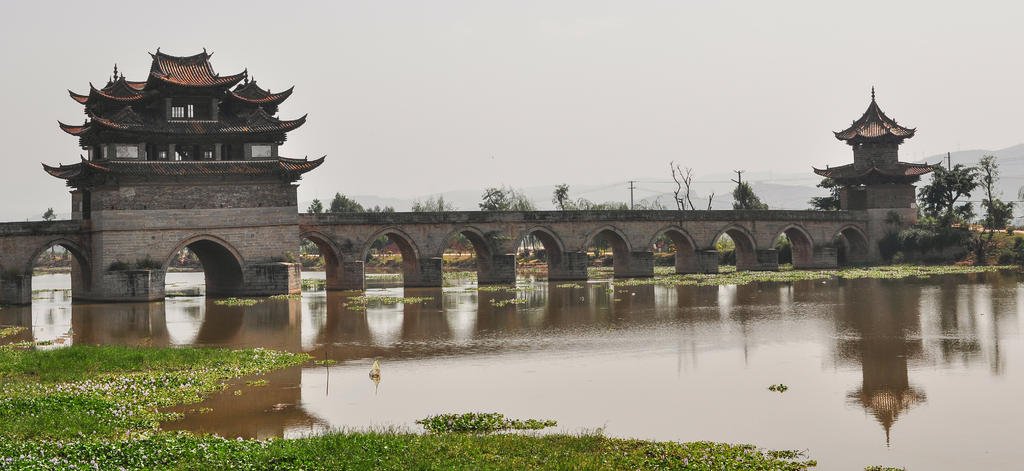
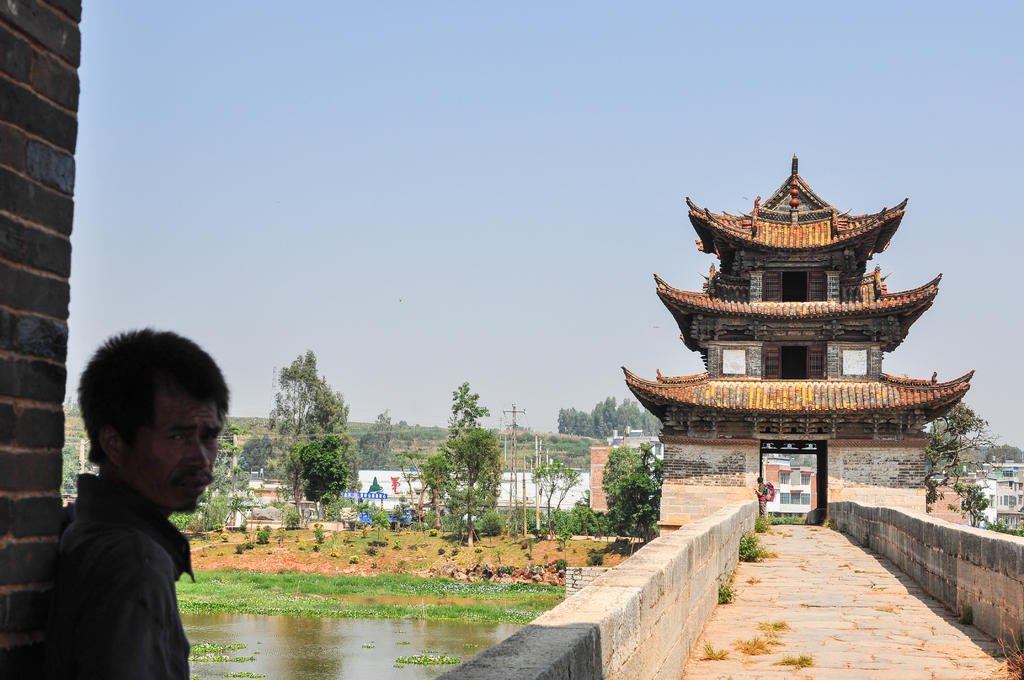
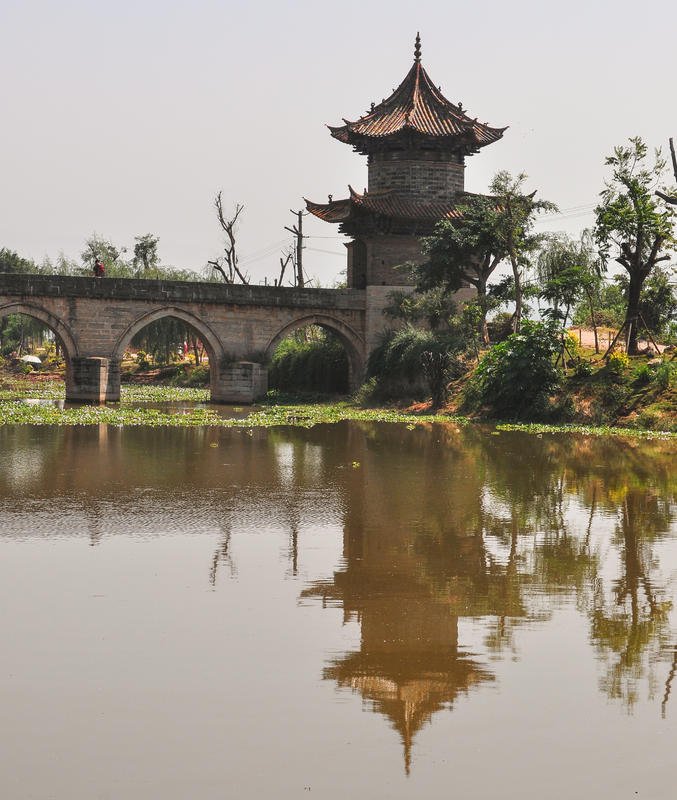
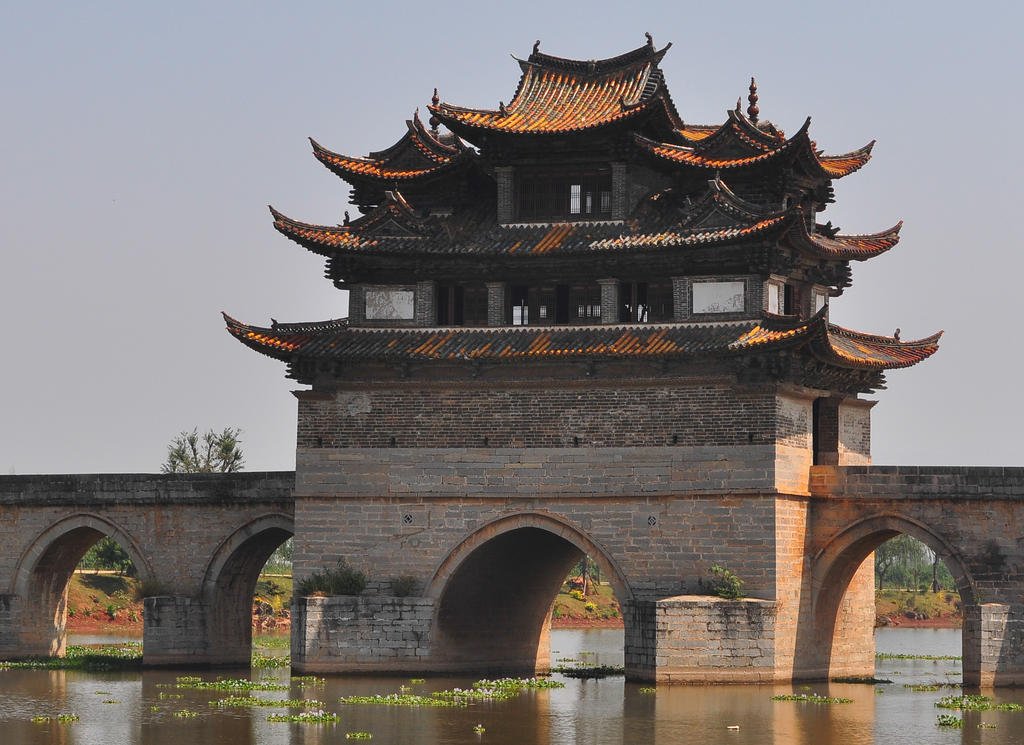


From: Twin Dragons Bridge, China Jianshui travel guide, Kunming tour Yunnan to Jianshui Shuanglong Bridge
Five kilometers west of Jianshui , at the confluence of Lujiang River are the Tachong River, lies Shuanglong Bridge. A combination of science and art, the stone bridge ranks first in Yunnan Province in terms of size and artistic value. It is now under provincial protection. When the bridge was built during the reign of Emperor Qianlong in the Qing Dynasty, it had only three arches on the north end. Later on, as the Tachong River changed its course, fourteen new bridge arches were added to the original ones and thus got the name "the Seventeen - Arch Bridge''. It is a masterpiece among ancient bridges in China.






KTMphil
Senior member
Beautiful, bright blue skies leaving Jian Shui, perfect day for a ride.

Bamboo cutters busy in the early morning

Further south, we sat and watched these 2 trucks scrape against each other, then the argument about who's fault it was

A little hazy, but the valley was impressing most riders


Off to the fields - The lighter coloured tribal is are the "Wi", dark colored tribal dress tends to be "Hani" tribe


Bamboo cutters busy in the early morning

Further south, we sat and watched these 2 trucks scrape against each other, then the argument about who's fault it was

A little hazy, but the valley was impressing most riders


Off to the fields - The lighter coloured tribal is are the "Wi", dark colored tribal dress tends to be "Hani" tribe

KTMphil
Senior member
Here, approaching the Hong He rice terraces, one of the large villages on the outskirts

First time I'd seen the terraces just after a rice harvest, completely different colors

The Hong He rice terraces can be traces back 1,200 years, we were told they only get one rice crop a year here





Harvest nearly completed


First time I'd seen the terraces just after a rice harvest, completely different colors

The Hong He rice terraces can be traces back 1,200 years, we were told they only get one rice crop a year here





Harvest nearly completed

KTMphil
Senior member
Noodle soup in a small village , all the small boys are amazed by the big bikes


A Wi tribal lady in traditional costume poses for us




A Wi tribal lady in traditional costume poses for us


KTMphil
Senior member
Oddvar in the mirror getting all of the rice terraces on the GoPro

All of the manual labor at the construction sites in the Hong He valley were worked by females

Wi construction workers


Nice, twisty roads ahead in the rice terrace valley



All of the manual labor at the construction sites in the Hong He valley were worked by females

Wi construction workers


Nice, twisty roads ahead in the rice terrace valley


KTMphil
Senior member
Further inside the valley, we came across a bunch of locals practicing some traditional carpentry


The more elderly gentlemen were supervising & having a smoke

Not sure what this guy was smoking but it looked like he'd had a skinfull



The more elderly gentlemen were supervising & having a smoke

Not sure what this guy was smoking but it looked like he'd had a skinfull

KTMphil
Senior member
We eventually found out that they were making a coffin and the tradition was that close family and friends of the desist, all came together and made the coffn by hand






An interesting home-made contraption









An interesting home-made contraption



KTMphil
Senior member
A couple of rice terrace snaps from the big camera



Lunch in the Hong He terraces, there's only one kind of noodle soup for lunch in China and this is it


Another WI tribal lady with her grandchild

Then down to the Red River Valley


Blue skies all day, 330km of great riding, everyone happy as we pull into Yuan Jiang





Lunch in the Hong He terraces, there's only one kind of noodle soup for lunch in China and this is it


Another WI tribal lady with her grandchild

Then down to the Red River Valley


Blue skies all day, 330km of great riding, everyone happy as we pull into Yuan Jiang


KTMphil
Senior member
A highway blast southwestwards to the Xishuangbanna (Sipsongpanna) region, lots of history and events here from the early 1900's (& back to the 1200's)

From Wiki:
Xishuangbanna Dai Autonomous Prefecture - Wikipedia, the free encyclopedia
In the chaos of the Xinhai Revolution that overthrew the Qing government in 1911 in favor of a Chinese republican government, a local official, Chao Meeng Jie, staged a rebellion against the Qing remnant officials. The Yunnan provincial government of the newly-established Republic of China sent troops in 1913 to oust the rebels.[SUP][6][/SUP][SUP]:137-138[/SUP] Ke Shuxun remained in Xishuangbanna to govern with his "13 Principles of Governing the Frontier", which emphasized ethnic, taxation, and land ownership equality between Han and Dai; allowance of intermarriage between the ethnic groups; and education in secular and technical subjects relevant to China, rather than Burmese-based monastic education.[SUP][6][/SUP][SUP]:156-158[/SUP] The Second Sino-Japanese War (1931-1945) saw the heavy bombardment of Xishuangbanna by Japanese troops and a simultaneous influx of Pan-Taiist propaganda from Japan's ally, fascist Thailand.[SUP][citation needed][/SUP] This temporal combination reduced the appeal of a broad pan-Tai identity among the Dai Lue.[SUP][6][/SUP][SUP]:173-174[/SUP]
During the final phase of the Chinese Civil War, many remnants of the Guomindang fled the victorious Communists into Burma's Shan State from Xishuangbanna. The new People's Republic of China sent various non-military expeditions to Xishuangbanna from 1949, including the "Central Visiting Group for the Minzu" (中央民族访问团, Zhōngyāng mínzú fǎngwèn tuán) to provide services such as schools and hospitals to replace those from Christian western missionaries that had the ulterior motive of converting the Chinese ethnic minorities.[SUP][6][/SUP][SUP]:193-194[/SUP] The Communists liberated the prefecture from Guomindang loyalists in 1952. On January 23, 1953, the People's Republic of China (PRC) established the Xishuangbanna Dai Autonomous Region and ended the native-chieftain system. That year, the People's Congress of Xishuangbanna created the New Dai Lue alphabet in order to provide for convenient printing of the Tai Lü language.[SUP][6][/SUP][SUP]:243-244[/SUP]
Xishuangbanna was renamed an autonomous prefecture in 1955, but lost some territory as the Hani and Yi-inhabited areas of Jingdong and Jiangcheng became their own autonomous counties.[SUP][6][/SUP][SUP]:40[/SUP] Peacefully negotiated land reform (和平协商土改, hépíng xiéshāng tǔgǎi) started in earnest in January 1956, finally destroying the power of the village headmen.[SUP][6][/SUP][SUP]:188-189, 211[/SUP] State-owned rubber plantations accounted for most of the region's wealth during the early PRC period. Xishuangbanna also received a wave of educated youths during the late 1960s Down to the Countryside Movement. During the Cultural Revolution (1966-1976), Buddhist temples in Xishuangbanna were used as barns, although they have been retored to their original purpose in 1981.[SUP][6][/SUP][SUP]:239[/SUP] In 1987, the Xishuangbanna government promulgated the Law of the Xishuangbanna Dai Nationality Autonomous Prefecture for Self-government in order to harmonize local laws with the national Law of the People's Republic of China for Regional National Autonomy.[SUP][6][/SUP][SUP]:68[/SUP] Shao Cunxin (召存信, 1922-), former head of the Chieftain's outer council (1944-1950) and chief of Meng Peng (1938-1950), was the chief of the autonomous prefecture from 1955 to 1992.
We'd planned to end the day in Jing Hong, a city that the Mekong River passes through
Into the city

Into the fancy Jing land hotel, Jing Hong



From Wiki:
Xishuangbanna Dai Autonomous Prefecture - Wikipedia, the free encyclopedia
In the chaos of the Xinhai Revolution that overthrew the Qing government in 1911 in favor of a Chinese republican government, a local official, Chao Meeng Jie, staged a rebellion against the Qing remnant officials. The Yunnan provincial government of the newly-established Republic of China sent troops in 1913 to oust the rebels.[SUP][6][/SUP][SUP]:137-138[/SUP] Ke Shuxun remained in Xishuangbanna to govern with his "13 Principles of Governing the Frontier", which emphasized ethnic, taxation, and land ownership equality between Han and Dai; allowance of intermarriage between the ethnic groups; and education in secular and technical subjects relevant to China, rather than Burmese-based monastic education.[SUP][6][/SUP][SUP]:156-158[/SUP] The Second Sino-Japanese War (1931-1945) saw the heavy bombardment of Xishuangbanna by Japanese troops and a simultaneous influx of Pan-Taiist propaganda from Japan's ally, fascist Thailand.[SUP][citation needed][/SUP] This temporal combination reduced the appeal of a broad pan-Tai identity among the Dai Lue.[SUP][6][/SUP][SUP]:173-174[/SUP]
During the final phase of the Chinese Civil War, many remnants of the Guomindang fled the victorious Communists into Burma's Shan State from Xishuangbanna. The new People's Republic of China sent various non-military expeditions to Xishuangbanna from 1949, including the "Central Visiting Group for the Minzu" (中央民族访问团, Zhōngyāng mínzú fǎngwèn tuán) to provide services such as schools and hospitals to replace those from Christian western missionaries that had the ulterior motive of converting the Chinese ethnic minorities.[SUP][6][/SUP][SUP]:193-194[/SUP] The Communists liberated the prefecture from Guomindang loyalists in 1952. On January 23, 1953, the People's Republic of China (PRC) established the Xishuangbanna Dai Autonomous Region and ended the native-chieftain system. That year, the People's Congress of Xishuangbanna created the New Dai Lue alphabet in order to provide for convenient printing of the Tai Lü language.[SUP][6][/SUP][SUP]:243-244[/SUP]
Xishuangbanna was renamed an autonomous prefecture in 1955, but lost some territory as the Hani and Yi-inhabited areas of Jingdong and Jiangcheng became their own autonomous counties.[SUP][6][/SUP][SUP]:40[/SUP] Peacefully negotiated land reform (和平协商土改, hépíng xiéshāng tǔgǎi) started in earnest in January 1956, finally destroying the power of the village headmen.[SUP][6][/SUP][SUP]:188-189, 211[/SUP] State-owned rubber plantations accounted for most of the region's wealth during the early PRC period. Xishuangbanna also received a wave of educated youths during the late 1960s Down to the Countryside Movement. During the Cultural Revolution (1966-1976), Buddhist temples in Xishuangbanna were used as barns, although they have been retored to their original purpose in 1981.[SUP][6][/SUP][SUP]:239[/SUP] In 1987, the Xishuangbanna government promulgated the Law of the Xishuangbanna Dai Nationality Autonomous Prefecture for Self-government in order to harmonize local laws with the national Law of the People's Republic of China for Regional National Autonomy.[SUP][6][/SUP][SUP]:68[/SUP] Shao Cunxin (召存信, 1922-), former head of the Chieftain's outer council (1944-1950) and chief of Meng Peng (1938-1950), was the chief of the autonomous prefecture from 1955 to 1992.
We'd planned to end the day in Jing Hong, a city that the Mekong River passes through
Into the city

Into the fancy Jing land hotel, Jing Hong


KTMphil
Senior member
Jing Hong has some interesting ties with Chiang Mai, Thailand:
In 1296, Lanna's capital Chiang Mai was founded by Mangrai, whose maternal grandfather was King Rung Kaen Chai (Thai: รุ้งแก่นชาย) of Jinghong (i.e.: Sipsongpanna).
(Jinghong - Wikipedia, the free encyclopedia)
Jing Hong is now a huge city with a population of around 450,000, with palm tree cladden shopping streets, not a small dusty town as you'd expect close to the Myanmar border.

Being so close to Myanmar, even the road signs are duplicated in Myanmar text

In 1296, Lanna's capital Chiang Mai was founded by Mangrai, whose maternal grandfather was King Rung Kaen Chai (Thai: รุ้งแก่นชาย) of Jinghong (i.e.: Sipsongpanna).
(Jinghong - Wikipedia, the free encyclopedia)
Jing Hong is now a huge city with a population of around 450,000, with palm tree cladden shopping streets, not a small dusty town as you'd expect close to the Myanmar border.

Being so close to Myanmar, even the road signs are duplicated in Myanmar text

| Thread starter | Similar threads | Forum | Replies | Date |
|---|---|---|---|---|
|
|
Jing Hong, China to Chiang Saen, Thailand, port of entry, motorcycles on a ship | China Ride Reports | 2 | |
|
|
Chiang Rai to Hainan China | China Ride Reports | 24 | |
|
|
Recky tour - Chiang Mai to the Tibet border / Kawa Karpo at 6,740 meters (22,113') | China Ride Reports | 294 |


